Issues
Interview: Christopher Luxon says debate over New Zealand’s founding document is finished
In 2023, New Zealand’s voters chose National Party leader Christopher Luxon to become their 42nd prime minister. With the country in recession, their decision might be seen as pragmatic – Luxon had decades of experience in the world of business, having served as the CEO of national flag carrier Air New Zealand between 2012 and 2019, before stepping down to run for parliament. He was elected as an MP in 2020 and became the leader of the opposition the following year. His swift rise reflects that of his internationally better-known predecessor, Jacinda Ardern. But that’s where their similarities largely end.
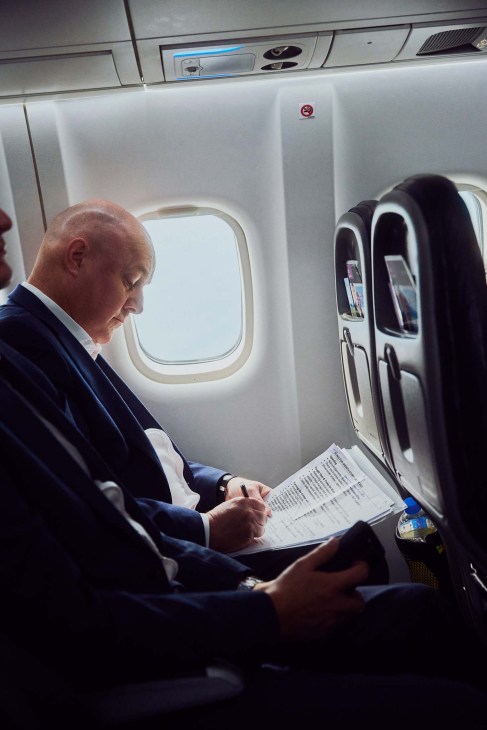
After a period when New Zealand was seen as a bastion of progressive internationalism, the country, like many others, has turned inwards, focusing on domestic issues such as the economy and housing. Another hot topic, which has dominated the first two years of Luxon’s term, is the 1840 Treaty of Waitangi. Some on the right have criticised New Zealand’s founding document for affording too many rights and protections to the country’s indigenous Maori population – a complaint that has led to heated scenes in parliament and protests on the streets.
Late last year, Luxon acceded to the demands of a coalition partner, the right-wing act New Zealand party, to hold a parliamentary vote on rewriting some of the treaty’s principles. The bill caused the prime minister’s personal approval rating to plummet. Just days after it was definitively voted down in April, Monocle joined Luxon on a meet-and-greet trip to the city of New Plymouth, a centre of dairy farming and energy exploration. Following a barbecue at a bee farm, we sat down to discuss Ardern, Donald Trump and the Treaty of Waitangi.
We were surprised to learn that you fly commercial.
Yes, it’s the way to get around in New Zealand. We travel commercial because it’s efficient but it’s also a great way to meet and talk to people. It’s always good to get out there – into the provinces, where people can tell you what’s going on. It’s an important aspect of being a politician, just as it was for me as a business leader. You need to see what’s going on, to hear about the challenges that people are facing and also about the opportunities.
From an international perspective, New Zealand was put on the map by Jacinda Ardern and the progressive, empathetic image that she had on the global stage. Did you take any lessons from her time as prime minister?
Everyone does it differently because you inherit the country at a specific time. You play the cards that you’re given and have to deal with the situation that you have in front of you. In our case, we inherited a pretty poor economy from the Ardern-Hipkins years [Chris Hipkins was Ardern’s successor as prime minister and is now the leader of the New Zealand Labour Party]. That’s why New Zealanders voted them out. It has been challenging to work through a recession and get the country out of that economic mess. But the key thing for New Zealand and its place in the world is that it punches above its weight.
There seemed to be a disconnect with Ardern: abroad, she was seen as a visionary progressive with a strong set of values but, at home, her popularity waned with the economy. What you’re seeing across global politics is that populations are increasingly frustrated with politicians who only have nice bumper stickers and soundbites. Voters want things to get done: they want to see results and improvements to their everyday lives, especially coming out of the coronavirus experience, which left us with high inflation, high interest rates and, in our case, a recession.
Donald Trump’s second term has already had an enormous effect on economies across the globe, particularly through tariffs. How exposed is New Zealand?
We’re relatively well positioned. We believe very strongly that tariffs aren’t good. We are free traders. Alongside Singapore, New Zealand was among the initial countries that established what’s called the CPTPP [Comprehensive and Progressive Agreement for Trans-Pacific Partnership], which is probably the most comprehensive free-trade agreement that the world has at the moment. The free movement of goods and services is a good thing. Therefore, we don’t advocate for tariffs. What we’re trying to do is to ensure that we stay very cool, calm and collected as we work our way through those issues with the US administration. We have a good relationship with the Americans and will continue to have positive and constructive ties with them. We might disagree when it comes to [tariffs] but we can still have a very good relationship going forward.
What are New Zealand’s major exports to the US?
We have three: red meat, wine and dairy. We sell premium products and expect to continue to do so.
What is your relationship like with China? Do you have a lot of eggs in that basket, in terms of both trade and security?
We have a very longstanding and important relationship with China. It is our largest trading partner and we co-operate in areas around trade, the climate and renewables. But we also acknowledge that we have different political histories, cultures and values. China is one of the countries in this multipolar world that is now shaping global politics. So we call out those differences. I have done so with the country’s president, Xi Jinping – publicly, privately, consistently and predictably. Where we have issues or points of difference, we are not afraid to raise them. Of course, we continue to look for areas where we can co-operate but we disagree where we must.
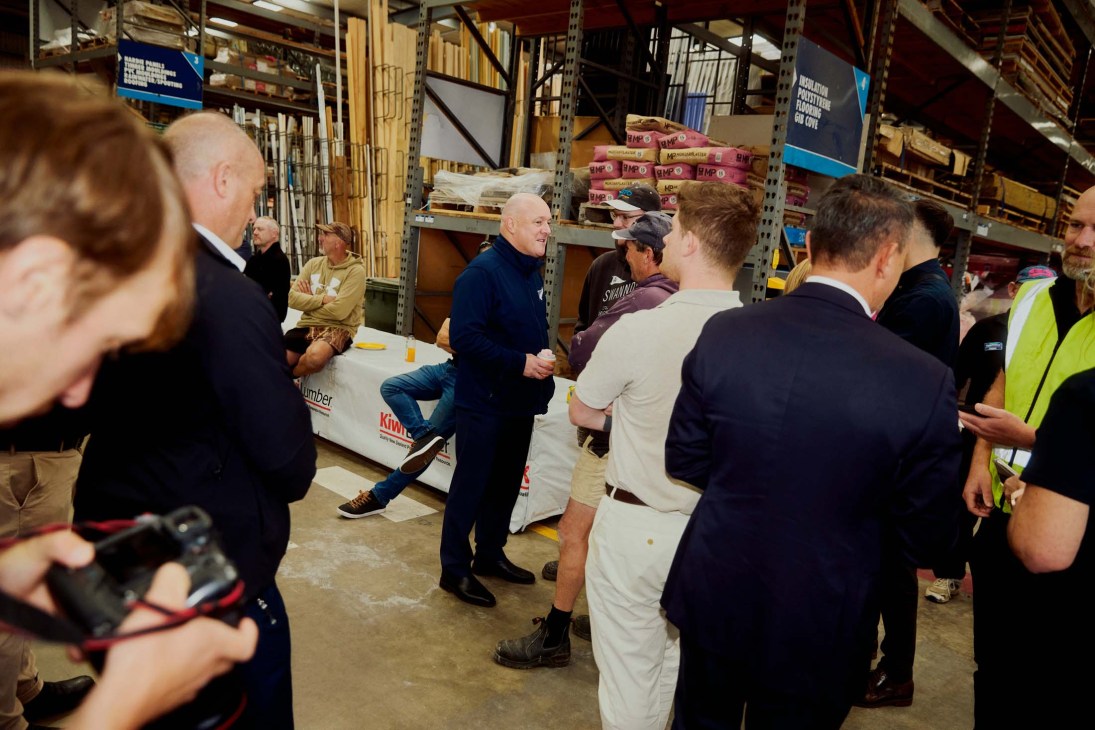
In your eyes, what are the core values that define being a Kiwi?
It’s all about fairness: we just believe that everyone deserves a fair shot. We don’t like it when people rise too high or fall too low, so we keep things pretty even. We’re highly innovative and creative. We’re also very resourceful. We can talk to kings and paupers. We don’t have a lot of time for hierarchy and self-imposed status. We take people as they are.
I have lived in Sydney, then I was in London, Chicago, Toronto and then New York. When you come from a small country, you tend to have a more generalist set of skills. You also value people and understand those who are different from you. So you’re quite happy walking across a room and hearing some of the points of view that others have. Curiosity has served me very well, as has my Kiwi-ness. They have contributed to my success in my business career and my ability to take things on and learn. In the process of doing so, you pick up the good things from other countries and cultures that you see and build them into your game.
How committed is New Zealand to the Five Eyes intelligence partnership with the US, UK, Canada and Australia? Have the recent revelations about the White House’s Signal group-chat leak given you any hesitation?
We are very comfortable in Five Eyes. We have been collaborating with our partners, in an intelligence sense, for a long time. We want to ensure that we are making our own contributions and are following through with investment in our intelligence services but also in our broader defence capabilities as well. We are very proud of these relationships and they’re important for New Zealand. The alliance helps to keep New Zealanders safe.
So, knowing how the intelligence information is handled, managed and cared for by our allies, I have every confidence in Five Eyes. I’m very comfortable with the ways in which our partners use what we provide them with – and also with how we use the information that they give us.
After Washington’s recent decision to cut US international development projects in the Pacific, Australia had to jump in and take over, which it did.What is New Zealand’s role in terms of development in the region? Do you foresee that you’ll have to take on a bigger role – or a greater share of it – in the future?
We think that it’s important for the US to reinstate that funding and to continue with its work in the Pacific. We have raised this with the US administration and made our case. Meanwhile, both Australia and New Zealand have been increasing aid spending in the region. We have deep relationships with the Pacific and I have spent a lot of time there. Auckland is actually the biggest Polynesian city in the world. We understand how the Pacific thinks because, in many ways, it’s how New Zealand thinks. We can grasp its issues and that makes us a very valuable partner.
You have a new golden-visa scheme. Can you tell us a little about it?
One of the things that we need to do in order to lift our standard of living and economic productivity is to welcome more direct foreign investment to New Zealand. There are two parts to this. First, there was our recent Infrastructure Investor Summit, which was about making the pitch to sovereign wealth and pension funds to partner with government to build crucial infrastructure in the country. The second part is to say to high-net-worth individuals, “Look, there are pathways to residency here if you make investments in productivity enhancing assets in the country.”
When we had a similar thing going on in the past, we would get a NZ$2.2bn [€1.2bn] investment from high-net-worth individuals, initially as part of the visa process – but then, once they were here in the market and were comfortable, and had built networks, they would invest almost the same amount of money again. When we have a foreign investor here partnering with a New Zealand firm, there’s an injection of capital that enables growth, and there’s often knowledge transfer as well.
I saw a fantastic business collaboration a couple of weeks ago in a place called Cromwell, near Queenstown. A New Zealand building company had partnered with a Swiss firm on the on-site manufacturing of buildings that were up to four- or five-storeys high. That brought in capital and also some Swiss thinking. Plus, it created opportunities for our products to go out into the world.
Another issue that New Zealand is facing domestically is housing. Between 40 and 50 per cent of Kiwis can’t afford to own their own home. How are you working to mitigate this?
The housing market is complex. First and foremost, we have plenty of land in this country. We are the size of the UK and Japan but with only five-and-a-bit million people living here. So a lot of this is about working with our councils to unlock the land, to rezone it, to allow and plan for 30 years of growth. It’s a supply-side problem. We have artificially constrained supply, which has driven up prices.
The Treaty Principles Bill, which aimed to rewrite some of the points in the Treaty of Waitangi, was recently resoundingly voted down in parliament. What are your reflections on that?
We operate in a mixed-member proportional political system here, similar to in Western European countries. There are six political parties in our parliament, each with strong and differing views. My party is the largest and we formed a coalition government with two minor ones. We have strong alignment on many things but there are areas where we differ and it was part of the coalition agreements that we have to compromise. So we had a debate about the issue. One party wanted to hold a full national referendum on the bill. We found a compromise, which was a first and then second reading in parliament.
Where will you go from here on the issue? The ACT party’s leader, David Seymour, who instigated the bill, has vowed to keep it alive.
No, we’re finished. We’re done. We had the conversation, had the debate and discussion. We’re moving on.
In your opinion, what is the role of New Zealand’s Maori population? And also the Maori language, the Waitangi Treaty and Waitangi Day?
It’s very important. The Treaty of Waitangi is our country’s founding document. It’s about the relationship between iwi – Maori tribes – the Crown and the government. It’s a crucial piece and we have wrestled with it for 185 years. It has made our country much better, much more tolerant. I’m very proud of it.
When I look at the history of race relations in many other countries across the globe, I think that the Treaty of Waitangi has served New Zealand incredibly well. It hasn’t been easy: we’re debating the interpretation of the treaty and what it means in the modern world. But we’re not afraid of those conversations and shouldn’t be.
One final question: the film director James Cameron recently became a citizen of New Zealand. Are you expecting a potential influx of applications from the US?
We’ve got him – I mean, why wouldn’t you want to be a New Zealand citizen? This is the best country on Earth. We welcome people from all around the world. When they come to this country and experience it, and see a way of life that’s different from what they have known at home, you can see them fall in love with it. Kiwis are open and friendly, and welcome everybody. If people can contribute here and they want to be citizens, we welcome them because we are much richer and better in all senses by virtue of the waves of immigration here. I’m proud of anyone who wants to be a New Zealand citizen.
Different strokes: the unique canvas works of Pol Taburet and Claire Oswalt
The art of the eerie
Pol Taburet
Paris
When Pol Taburet was a child, his mother would take him to look around museums. It was a natural choice of activity for her: she was a museum guard at Musée d’Art Moderne de Paris. “She wasn’t educated in art,” says Taburet. “But working all the time in those rooms, you become sensitive to the paintings.” That sensitivity, and an insatiable enthusiasm for the medium, has clearly trickled down.
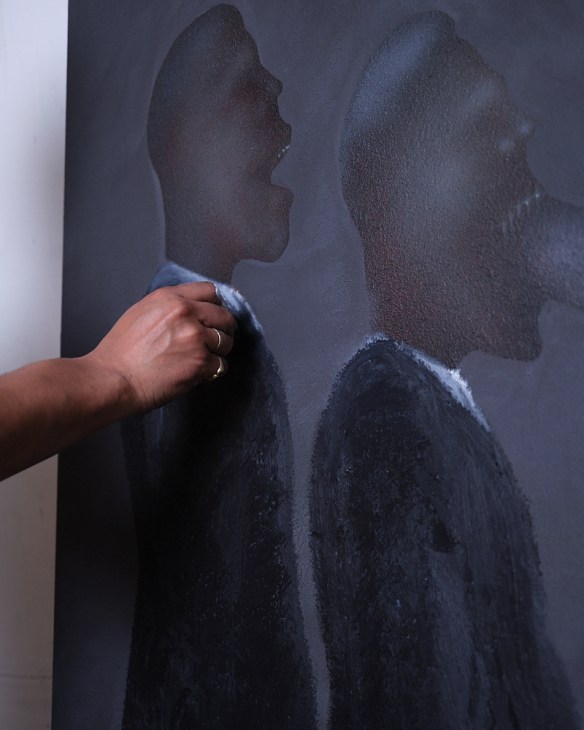
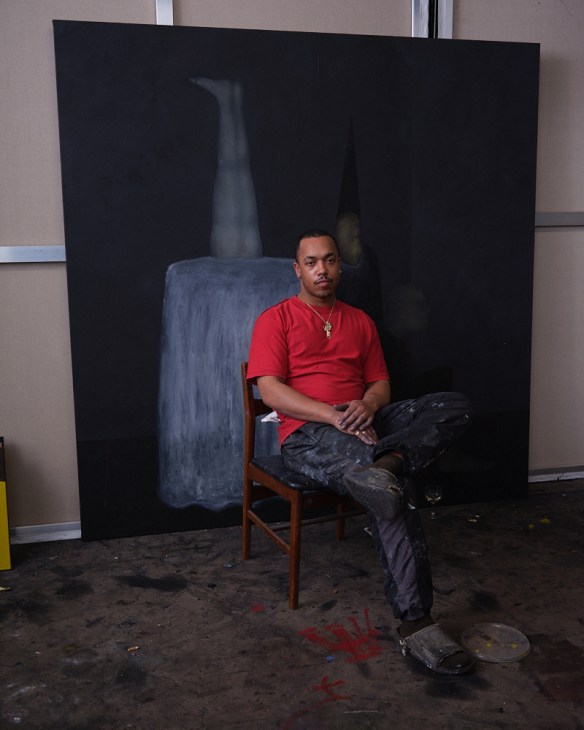
When Monocle visits Taburet’s studio on the outskirts of Paris, we catch the 28-year-old in the middle of a busy period. He’s just wrapped up a solo exhibition at Madrid’s Pabellón de los Hexágonos – huge paintings that were created specifically for the church-like space. Now he’s finalising the paintings and sculptures for a show at Schinkel Pavillon in Berlin. Next, he’ll be off to Brazil to spend two months creating work to display at the São Paulo Biennial from September.
In his paintings, Taburet typically depicts ghostly figures. Sometimes they sit around the bright white of a tablecloth, in other works figures float and body parts freewheel across the canvas. For someone as warm and effervescent as Taburet, the works seem to have a dark underbelly. But he insists that it’s honesty, rather than darkness, on show. “I am trying to paint something real,” he says. Even if there is a sense of violence within the work, there’s a softness to it too. It’s “violence with gloss on top”, he says. “It makes it easier to look at.”
Francis Bacon is an obvious comparison but Taburet has found more inspiration in the likes of Edvard Munch or Roberto Matta. Taburet is also influenced by what he finds in books such as 1993’s L’art Océanien, a doorstopper full of interesting shapes and faces. But if he had to pick one enduring influence, there’s little competition: South Park. “When you want to talk to children, you have to have this efficiency of information,” he says. “South Park is the best for that, only using round, square and rectangle shapes. But so much is happening.” Taburet thinks that it’s this meeting of venerated art history and childish cartoons that has led to his individuality as an artist. He’s humbled by his success and how his work – “this dark humour, these freaky images”– seems to speak to so many people.
Parts of a whole
Claire Oswalt
Austin
Texan painter Claire Oswalt ascribes to the theory that all art is generated by the subconscious. “People often ask me where the inspiration for my colours comes from,” she says from her studio in Austin. “And I have absolutely no idea.” After long stints in Los Angeles and New York, the 46-year-old returned to her hometown. Though the Texan capital is an enclave of creativity and progressivism in a state not famed for such things, it is a very different environment from the two megacities that dominate America’s artistic output. Still, any attempts by Monocle to impose a geographical stamp on Oswalt’s work are politely rebuffed. “I don’t feel like my location has much to do with it,” she says. “There’s a quote from the Wim Wenders’ movie Wings of Desire, in which a character says, ‘‘Behind closed eyes, close your eyes once more.’ And I feel like that’s the place from which I’m working.”
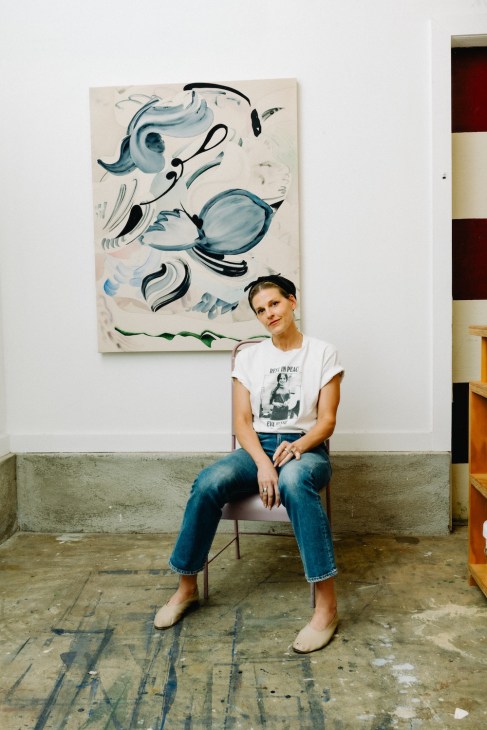
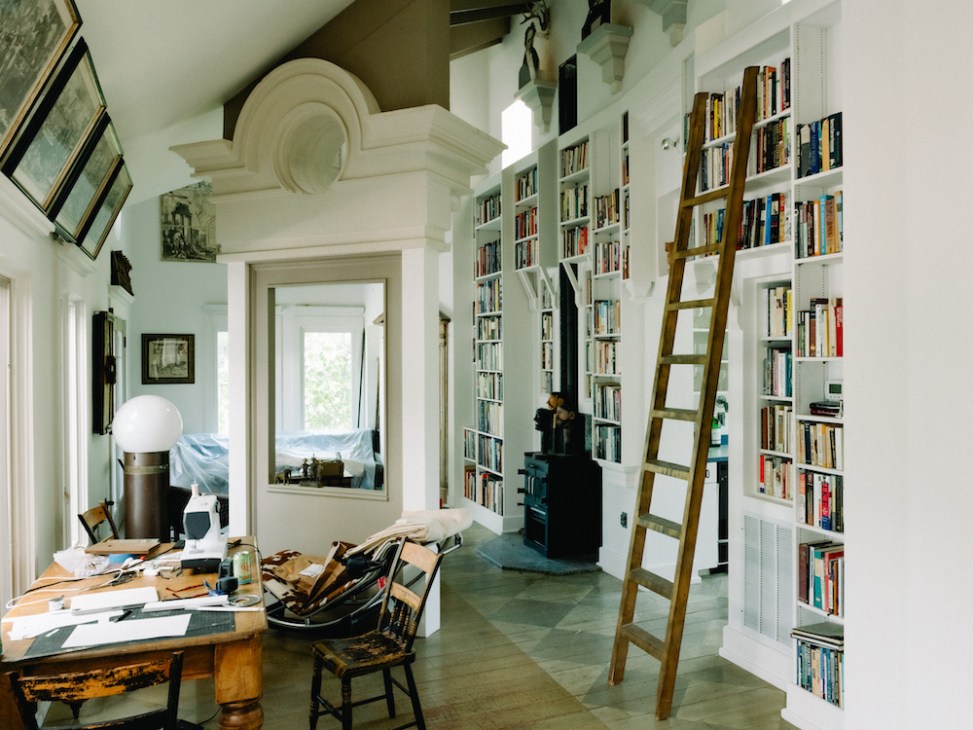
Despite this, the colours of Oswalt’s recent output seem to be more informed by the natural than the interior world. And though the scale of the collaged paintings speaks to the western US tradition of grand vistas, their nature and construction are anything but brash or broad brushstroke. Indeed, each honours “that tiny moment of making that first mark on the paper”. This first mark comes after a painstaking process involving the accumulation of dozens, or even hundreds, of pieces of paper piled high on her studio floor. “It’s quite a live thing,” she says. “When I start to move them around, that’s when these abstract pieces emerge… And the edges of these collage papers become the seams of my work.”
Oswalt attributes the methodical, even mathematical, way of producing work to her grandparents. Her grandfather was an engineer who made stained glass in his free time, while her grandmother was an oil painter. “And that kind of dichotomy of math and painterly aspects carried through for me.”
She describes the final process of bringing all the components of her collages together as symphonic. “I’m fascinated by this idea that, especially in a symphony setting, you can have one instrument, one note, and then you put it all together and you’ve created an opera.”
Why can’t young people dance?
For years the media was obsessed with all the things that the millennial generation was supposedly killing, from fabric softener and home ownership to mayonnaise. But now their successors, Gen Z (those born between 1997 and 2012), have been handed an even graver charge: being unable to dance. In a series of videos that went viral on social media in April, incredulous observers filmed groups of young people standing completely still or glued to their screens on the dance floors of nightclubs. How is it that the so-called Tiktok generation – named for an app that owes much of its success to carefully choreographed dance challenges – is incapable of losing itself to the music?

Well, for one, outside of North Korea or a Texas rodeo, dance floors are not made for regimented routines.They’re a place to escape the lines of life, anonymous amid a mass of bodies and beats. This abandon is much more difficult if you’re under constant surveillance, of course. When you grow up under the all-seeing eye of social media, you develop a fear of being filmed doing something stupid. We used to dance like no one was watching; now we dance like everyone is. In Europe clubs are increasingly insisting on placing stickers over phone cameras so that nobody has to worry about ending up a laughing stock the next day.
Then there’s the fact that clubbing is facing an existential crisis, in part fuelled by the younger generation’s general apathy towards nightlife. In the UK alone, some 400 night clubs have closed over the past five years, about a third of the country’s total. We can blame the pandemic for a chunk of that (and we can blame consequent lockdowns for the younger generation missing out on early clubbing experiences) but there are other factors at play. A major one is that young people can’t afford to go out like they used to: Danish nightlife conglomerate Rekom Group’s research suggests that over 77 per cent of British people have cut down on late nights out due to the cost-of-living crisis.
Given that they came of age during successive lockdowns and were thrust into a world in which they can’t afford to go out, how can we expect Gen Z to know what to do in a club once they get there? Many, it seems, can’t even rely on the social lubricant that is alcohol. A recent survey of 18 to 24-year-olds by market-reserach firm Yougov highlighted this cohort as the most sober group among adults, with 39 per cent of respondents not drinking any alcohol at all. And when they are drinking, Gen Z are increasingly drawn to strange concoctions, such as Malibu and milk. I can’t imagine a worse time to throw your body around than after a big swig of any combination of milk and liquor. As for the other kind of white stuff, some reports claim that Gen Z are less likely to consume class A drugs than previous generations. Though some say otherwise, with anecdotal reports suggesting that younger people favour drugs such as hallucinogens and ketamine, both of which aren’t generally associated with the desire to dance.
Ultimately, social media will never tell us the full story. “Every new generation has a subtly different relationship with club culture compared to those who came before them,” Ed Gillett, author of Party Lines: Dance Music and the Making of Modern Britain, tells Monocle. “There have always been boring, sterile clubs full of disinterested people and rubbish dancers.” That said, the current generation of aspiring party people does face a number of obstacles to throwing their hands in the air like they just don’t care. And if the dance floor can so easily be murdered, what chance does mayonnaise have?
Ten disruptors taking aim at modern warfare
The heat is on for Europe to start taking its own defence and security more seriously, with the US signalling that it will no longer be the guarantor of peace on the continent. European defence stocks are soaring as investors watch budgets track up for the first time in years. Countries claim that they want to “buy European” – yet those shopping around for new kit soon realise that while there are big local players such as BAE Systems, Thales and Dassault Aviation, the ecosystem of defence start-ups is less developed in Europe than in the US. There’s clearly some catching-up to do.
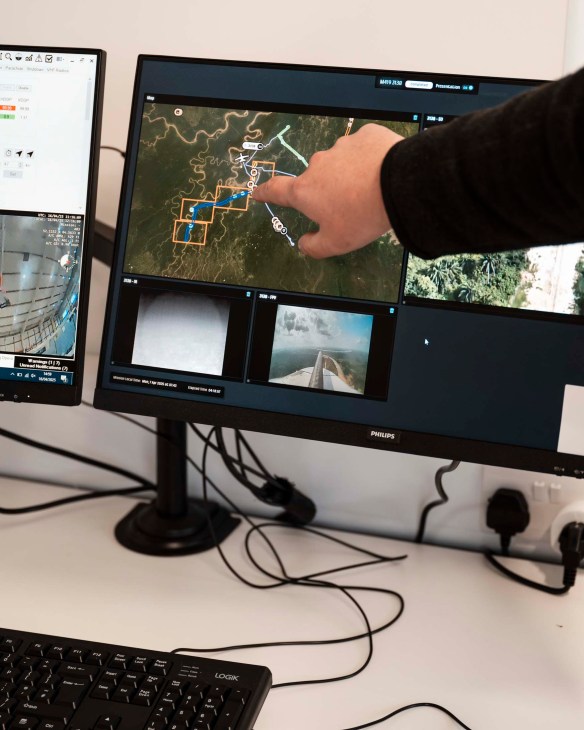
Here, Monocle rounds up 10 firms that could become the vanguard of the continent’s defence industry. Whether they’re creators of armour, walkie-talkies or counter-drone technology, the following have caught the attention of venture capitalists, helping them to scale up to meet the moment.


1.
The up-and-comer
Tekever
Portugal
Portuguese defence firm Tekever started out building software before shifting into drone technology in 2010. According to its CEO, Ricardo Mendes, those beginnings planted the seeds of its success. “Good software companies are agile to their core,” he says. “Just look at your phone. You get a new update every two to three weeks and, if you don’t, it starts to lag. That attitude to development is how we approach our work.”
In 2018, Tekever signed its first contract with the European Maritime Safety Agency to run drone patrols over European waters, collaborating with Collecte Localisation Satellites, France’s space agency subsidiary. Russia’s full-scale invasion of Ukraine that began in 2022 boosted business as demand for hi-tech reconnaissance drones soared. Tekever has since expanded its Portuguese presence, rolled out a UK-based manufacturing hub and picked up investment from the Nato Innovation Fund and early SpaceX backer Baillie Gifford.
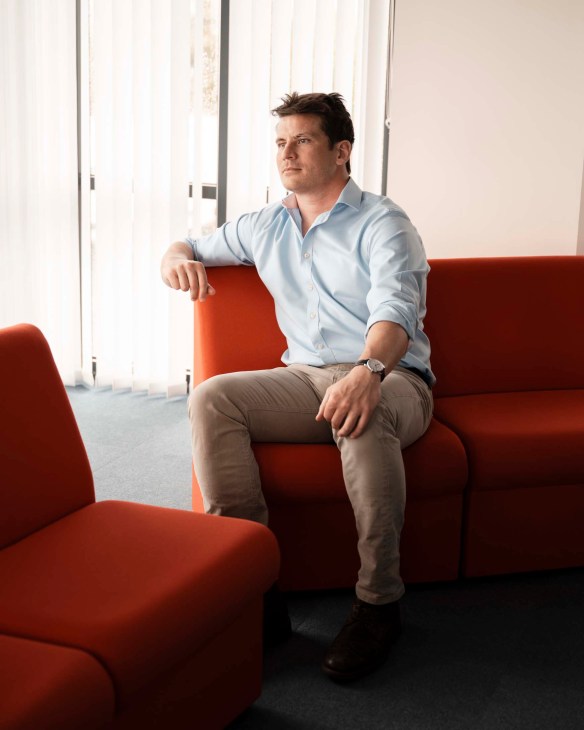

When Monocle visits Tekever’s facility in Wales, which opened in 2023, employees are hard at work on its AR3 surveillance drone. “We manage the entire process,” says Tekever’s deputy head of defence strategy, Phil Hanson. “The AR3 drone being used in Ukraine has gone through more than 100 iterations. We take feedback from customers 24/7, allowing us to update our products rapidly. That’s pretty much unique in the market.”
Tekever might be an emerging firm but it has illustrious neighbours. Nextdoor to the Wales facility is French defence giant Thales; from a meeting room, we catch sight of a 6.5-metre WK450 drone that Thales produced with Israeli military technology company Elbit Systems. That project was retired from service earlier this year amid rocketing costs – well before its scheduled end-of-service date of 2042. “There is a growing frustration with the present way of doing things,” says Hanson, who believes a fresh approach is needed – and which Tekever, with its agility, cost-effective mindset and urge to improve, is practising.
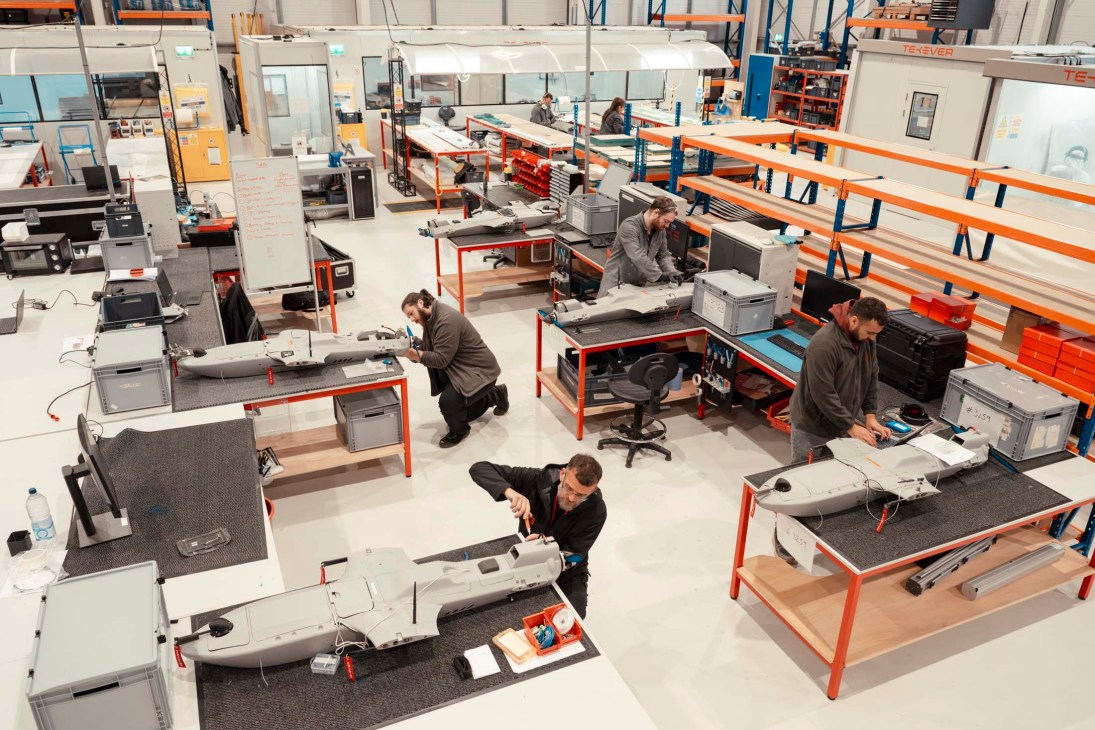
Mendes also believes this is a time of great opportunity for European defence firms such as his. “The nature of war and defence is no longer compatible with long development and procurement cycles,” he says. “The market model has changed and we’re moving away from defence monoliths. What Europe needs now are companies that can move fast, scale up and work together in an ecosystem.”
tekever.com
2.
The delivery guys
Arx Robotics
Germany
Last-mile delivery is a sector that’s full of opportunities, whether that’s doorstep drop-offs or getting military supplies to the front line while under fire. During his time at the start-up incubator lab at Bundeswehr University Munich, which is run by the German Armed Forces, former army officer Marc Wietfeld wondered whether robots could be put to this dangerous task.
As Wietfeld explored the robots’ potential for logistics, he sought to raise funds for a large prototype. In March 2022 he teamed up with Max Wied, another army officer with a background in finance. Stefan Roebel, who cut his teeth in business at Ebay and fashion retailer Asos, joined in 2023. A few years later, the company they founded, Arx Robotics, has already broken several records, including for funding and deliveries to Ukraine, where its robots now carry ammunition, sensors or aerial drones into combat and wounded soldiers out of harm’s way.
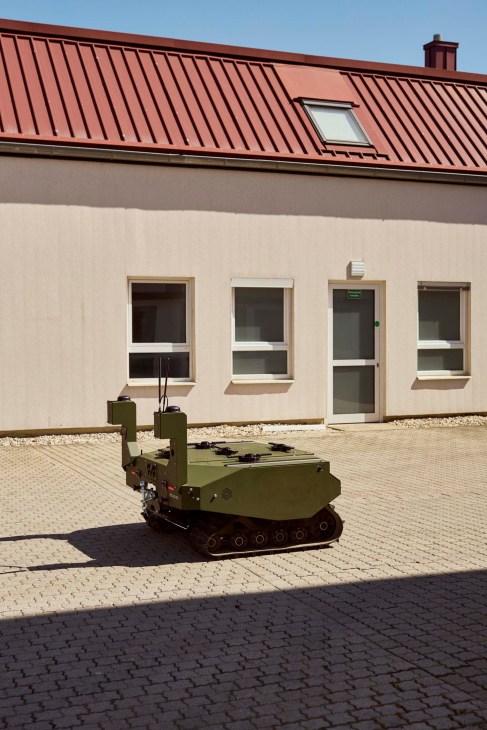
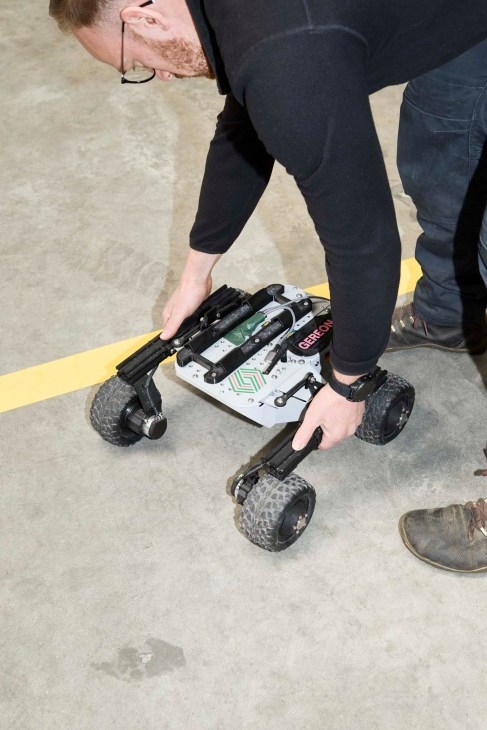

business development
The success of Arx’s Gereon robots is down to their autonomous capabilities, which are facilitated by a mix of artificial-intelligence software, night-vision stereo cameras for a 3D view, and thermal and lidar sensors for obstacle recognition. Crucially, they are also inexpensive to build, as the software easily integrates with third-party products and the hardware is mostly made up of off-the-shelf industry components. Initially, Arx set the cost of a robot at between €30,000 and €150,000, depending on features and sensors. Today, says Wietfeld, “They cost a sixth of our cheapest competitor.”
Arx robots have all-terrain tracks, a maximum speed of 30km/h and a range of 40km. The modular mounted section of the robot can be swapped out by hand in just two minutes and can be modified to carry a stretcher for evacuations, sensors for reconnaissance, a launcher for aerial drones or a basket for supplies of up to 500kg. The firm rapidly attracted supporters and capital. In September 2023, Project A, a Berlin-based technology VC company, invested €1.15m. Nine months later, Discovery Ventures, another VC from Berlin, and the Nato Innovation Fund (see below), along with Project A, put forward joint seed investment of €9m – the largest seed round for a European defence-technology company to date. In early 2025, Arx sent 30 robots to Ukraine. The delivery from Germany was the biggest autonomous ground fleet provided by any Nato country.
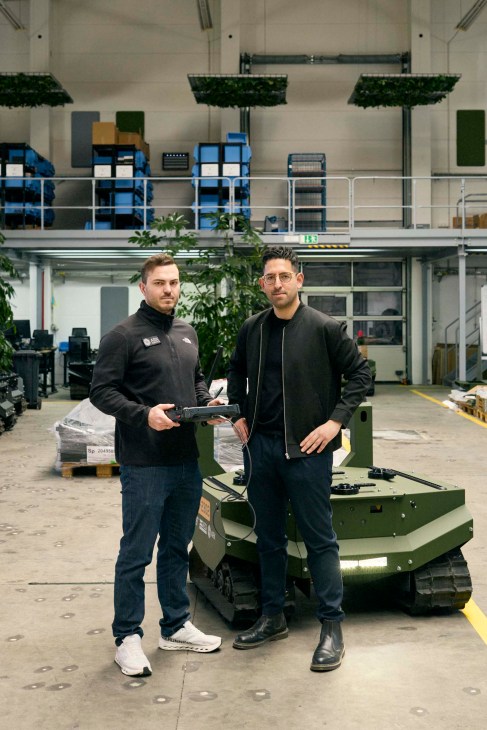
Since then, Arx has established a 10-person team in Kyiv to oversee maintenance and production and gather feedback. It found that limiting the size of the robots to about 1.3 metres makes them harder to detect and more easily deployable by civilian vehicles.
Arx is increasing production in Germany and Ukraine and setting up in the UK, and recently inaugurated Europe’s largest plant for unmanned ground systems in Erding, near Munich, which is becoming a hub for defence start-ups. In April, Arx secured a second funding round of €31m to quintuple its production capacity and raise its workforce from 60 to at least 100 employees by the end of 2025.”
arx-robotics.com
Investing in defence
European venture capital has in the past been wary of investing in start-ups that make products with links to warfare. But the invasion of Ukraine changed that. According to a 2024 report from the Nato Innovation Fund and Dealroom, European investment in the defence, security and resilience sector totalled €4.5bn in 2024, an all-time high. Here are five funds to know.
1.
MD One Ventures
Europe’s first VC firm dedicated to national-security start-ups has backed everything from quieter jet engines to AI.
2.
Nato Innovation Fund
Backed by 24 allies, this fund has deployed more than €1bn in hypersonic systems and next-generation communications.
3.
Scalewolf
The Lithuania-based accelerator invests in dual-use technologies with defence as well as commercial applications.
4.
National Security Strategic Investment Fund
This UK government-supported venture fund has backed breakthrough companies in drones and next-generation defence manufacturing.
5.
Hyperion Fund
This Spanish fund launched in 2024 with €150m growth equity and focuses on aerospace, cybersecurity and AI-related defence firms.
3.
The frontier steward
Frankenburg Technologies
Estonia
Being “mission-driven” has become a cliché among start-ups – jargon trotted out by ambitious founders and written in pitch decks. At Frankenburg Technologies, a defence start-up based in Tallinn, Estonia, the phrase feels more like a battle cry. “We are a single-use company with a single mission: to defend Europe and equip the free world with the technology to win the war,” says Kusti Salm, the firm’s CEO. As he speaks, he presents a prototype of the company’s first product: a missile designed to shoot down drones such as the low-cost Iranian-made Shahed deployed by Russian forces in Ukraine. In contrast to the traditional military-industrial model – which is heavy, slow and expensive – Frankenburg promises guided-missile systems that are 10 times cheaper and 100 times faster to produce.
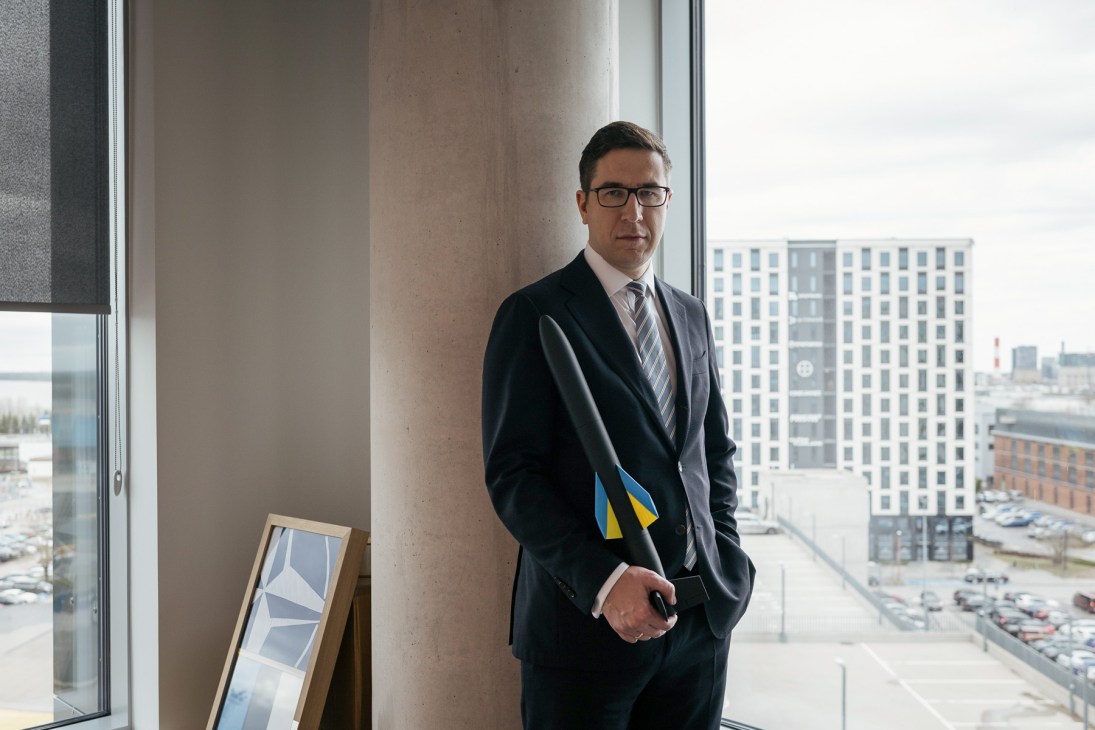
Estonia, once occupied by the USSR, now has more start-ups per capita than any other country in Europe. Frankenburg represents a convergence of that technology-forward spirit with a frontier nation’s understanding of regional security. The company was launched in 2024 by a formidable trio – a former high-ranking defence official in Estonia’s military, a veteran rocket scientist and one of Estonia’s wealthiest entrepreneurs – and has moved with the urgency of a start-up. In just a few months, its valuation has tripled to €150m. Several funding rounds have been announced, with plans to scale operations across Europe. The company is establishing research and manufacturing facilities in Latvia and opening a new headquarters in the UK. The company also has plans to test its missile systems in Ukraine, in co-operation with the country’s Ministry of Defence.
Frankenburg has a staff of about 50. Many of its employees are ex-military leaders and top engineers drawn from the private sector and academia. According to Salm, his team’s modest size makes the company nimble. “We’re faster, more flexible and not locked into outdated models,” he says. While Russian factories churn out low-cost drones by the hundreds of thousands, Europe’s air-defence systems are complex, prohibitively expensive and too slow to scale. “Europe is behind and, unless we invest trillions in defence capabilities, we’ll stay behind,” he adds.
Unlike conventional missile systems, Frankenburg’s products are intended to be scalable, partially disposable and manufactured using commercial components. Many of the sensors in its missiles, for example, are the same as those found in smartphones. The company also relies heavily on 3D-printing and rapid prototyping to slash costs and to iterate quickly. “There is no time to waste,” says Salm. “We can’t afford to move at the pace of traditional procurement cycles. The battlefield is changing now.”
frankenburg.tech
More European defence-technology firms to keep your sights on
4.
Greenjets
UK
Drones might be reshaping battlefield planning but the wasp-like buzzing of an unmanned autonomous aerial vehicle hardly makes for a stealthy entrance. UK-based Greenjets, which was founded in 2021, saw an opportunity to address this and is developing electric-powered jet engines for vertical take-off and landing that emit just a third of the noise.

The company launched its first engine of this kind in 2023. Designed to power the next generation of small unmanned aircraft, the IPM5 was inspired by the helicopter-shaped seeds of sycamore trees, which the wind can carry great distances. Its ducted-fan architecture helps to keep the volume down while making it safer and more secure than conventional engines with open-bladed propellers.
Though it weighs just 750g in total, the IPM5 efficiently provides plenty of thrust. It is now shipping to drone manufacturers. The company plans to eventually roll out models for larger aircraft that are capable of carrying passengers; it has released renders of a futuristic-looking “air taxi” and a timeline to have them aloft by 2028. That might sound ambitious – but there’s nothing wrong with aiming for the sky.
greenjets.com
5.
Pangolin Defense
France
Ballistic-protection specialist Pangolin Defense’s signature vest can take a pummelling. It incorporates glass scales to create flexible ballistic plates that make for comfortable and affordable bulletproof armour. Founded in 2020 by four students, Pangolin Défense received an early grant from the French ministry of defence that allowed it to manufacture everything in the country.

The company now makes 3,000 vests a month, which it supplies to militaries and police forces across the globe, as well as the UN. It has also recently expanded into the US. “Our goal is to win a major national or European public tender before the end of the year,” says co-founder Clément Saglio. “That will get us a seat at the big kids’ table.” The war in Ukraine led to a spike in demand and Pangolin Défense has doubled its revenue over the past two years.
pangolin-defense.fr
6.
Himera
Ukraine
Kyiv-based walkie-talkie maker Himera launched in 2022 to solve a problem: Ukrainian soldiers had few effective, cheap and reliable ways to communicate. “You can have the most sophisticated weapons and equipment but if you can’t co-ordinate, most of that becomes useless,” says Himera’s co-founder Misha Rudominski.

The company offers radio and communication devices that are resistant to external interference, such as that from Russian troops, as well as cheap to produce. In 2024 it announced a deal with Ottawa’s Quantropi to distribute its products in the US, Canada and selected Nato markets. Being based in Ukraine is an advantage to the business. “It has given us the best understanding of how our products work in practice,” says Rudominski. “Our users write to us from the battlefield, reporting any problems. We take that information on board and fix things.”
himeratech.com
7.
Helsinki Shipyard
Finland
Icebreakers are key to navigating the Arctic. Helsinki Shipyard is a historic builder that, until 2023, was owned by Russians and was heavily affected by sanctions. That year it was acquired by Québec-based firm Davie, which has been building ships in Canada since 1825. Its first new vessel, the Polar Max, will be delivered to the Canadian coast guard in 2030. “The door to the Arctic is wide open and the West isn’t winning the race,” says Davie’s Paul Barrett. “We’re looking to accelerate joint shipbuilding efforts on both sides of the Atlantic, with a view to securing the strategic interests of the West in the High North.”
davie.ca
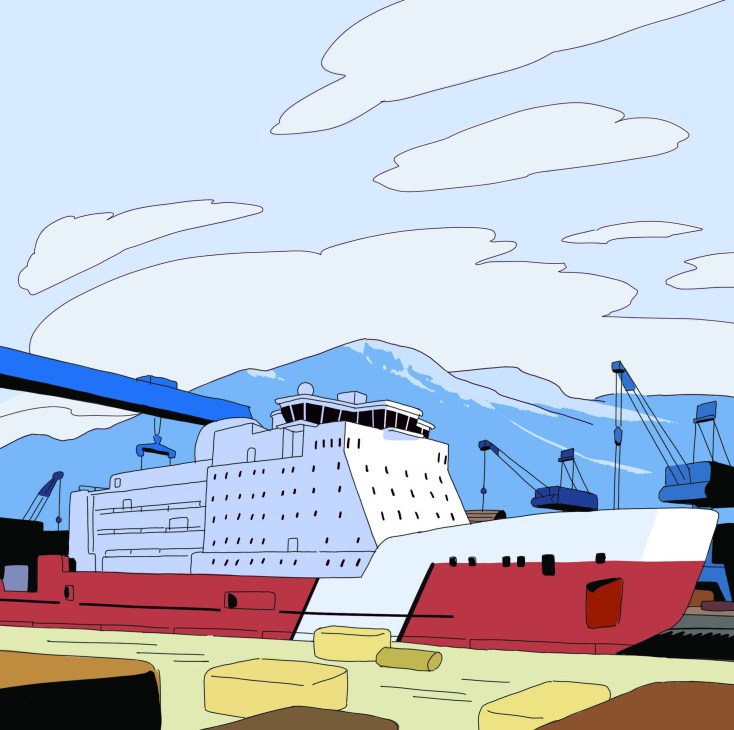
8.
Nordic Air Defence
Sweden
Swedish start-up Nordic Air Defence’s Kreuger 100 is a battery-powered, non-explosive drone interceptor that relies on built-in software to locate its target and knock it out of the sky. It’s named after Swedish tycoon Ivar Kreuger, who built a business empire on matches. “He took something potentially dangerous and made it safe, mass-manufacturable and cheap,” says the company’s business director Jens Holzapfel. “We will do the same with counter-drones. In Ukraine, it’s a numbers game right now. To compete, the countermeasures against drones must be cheaper than the actual threat – or, at least, not exceed its price.”
nordicairdefence.com

9.
Helsing AI
Germany
Founded in 2021, Munich-based Helsing AI is among Europe’s leading defence start-ups and was valued at €5bn last year. It creates AI software for battlefield planning that’s capable of crunching vast amounts of data from sensors and weapons systems, enabling split-second decision-making. It has also been used to co-ordinate drone “swarms” in Ukraine. Both a technology and a hardware company, Helsing makes products, such as its HX-2 drones, at “resilience factories” designed with local supply chains in mind.

The firm received support from venture-capital fund Accel, an early backer of Facebook and Spotify, and has partnered with French-American space start-up Loft Orbital to deploy Europe’s first AI-powered multi-sensor satellite constellation. In collaboration with Swedish aerospace firm Saab, Helsing is set to upgrade the electronic-warfare capabilities of 15 of the German Luftwaffe’s Eurofighters.
helsing.ai
10.
Space Forge
UK
Space Forge is a young company that is reviving an old idea: manufacturing in space. Its focus is the crystals that go into compound semiconductor chips, which are crucial to the energy-intensive radar and communication systems used by the defence industry, as well as by AI. “All of the things that make Earth a lovely place to live, such as gravity and the atmosphere, are terrible for almost any industrial process,” says Joshua Western, co-founder of Space Forge. Growing these crystals in space, he adds, is far quicker, with a lower risk of impurities.

In the summer, Western’s team will send its Forgestar-1 grower into orbit. Though still testing its product, the start-up has attracted industry interest and is collaborating with US defence giant Northrop Grumman. “Semiconductors are the oil of the 21st century,” says Western. “They underpin all critical infrastructure and whoever has the best material to make the best chip has the biggest edge.”
spaceforge.com
Could Kigali become Africa’s Dubai?
Rwanda might be synonymous with some of the worst crimes in recent human history but the predominant feeling in the country today is that of an optimistic future. Under the aegis of its 68-year-old president, Paul Kagame, who last year won a fourth consecutive election victory with more than 99 per cent of the vote, the country has experienced rapid economic growth, with GDP increasing by about 8 per cent every year since 2007. Rwanda is seen as a beacon of prosperity and peace not just in East Africa but the wider continent and in the past decade has climbed 100 places up the World Bank’s Doing Business index, now ranking second in Africa and 38th globally.
Nowhere in the country is this economic progressivism felt more than in Rwanda’s 1.7-million strong capital, Kigali, which is responsible for 41 per cent of the country’s GDP. Take to its highways and you see an urban centre shaped by an ambitious Plan for 2030, which focuses on sustainable development, as well as the nation’s Vision 2050 roadmap, whose goal is to ensure that Rwanda is a high-income country with improved living standards by the middle of the century. Either side of you are well-swept roads, their neat verges bordering smartly guarded buildings that point to a national ambition to lead a continent in security, business incubation and sports tourism.
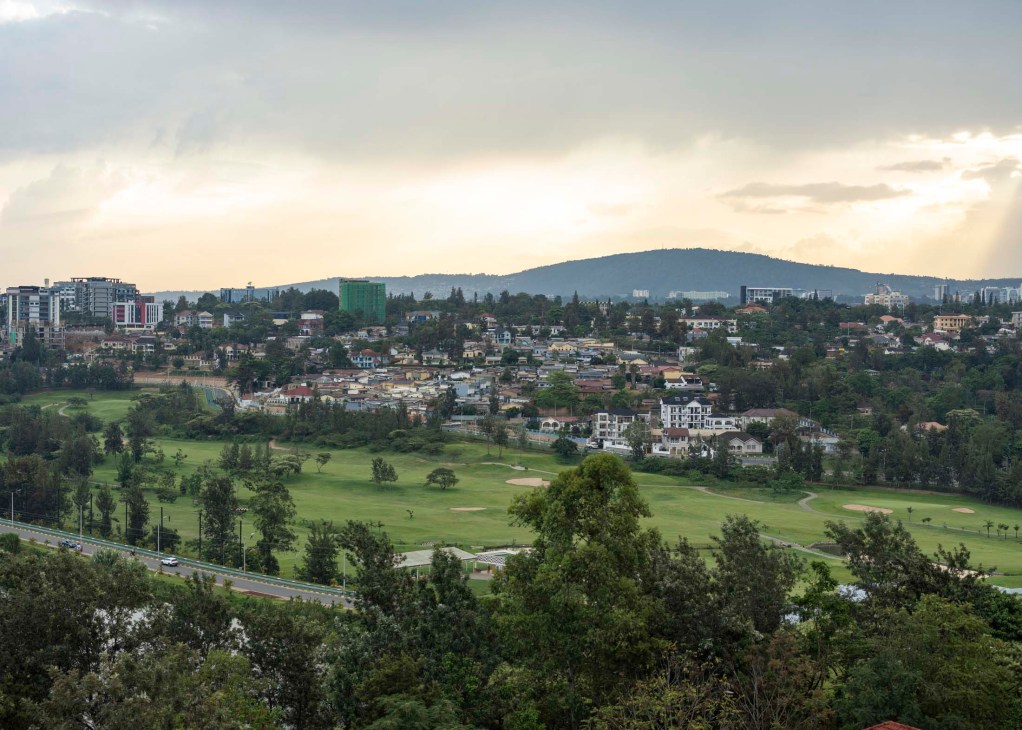
As you’re whisked through the city’s airport, you’ll see dozens of golf balls on adverts, as pristinely white as the terminal’s many pillars. Is this really the capital city of a country that just over 30 years ago was still embroiled in a civil war that caused the deaths of hundreds of thousands of people? Yes, and its impressively landscaped 18 holes are among a few things – an influx of foreign capital, improving infrastructure and a culture of surveillance – that you might judge it to have in common with, say, Abu Dhabi or Singapore.
As with those city-states, observers believe that Kigali’s serenity and stability come at a cost: namely, the suppression of human rights and personal freedoms. Since Kagame’s 2017 victory, according to Human Rights Watch, at least five opposition politicians and four government critics and journalists have died or disappeared in suspicious circumstances, though Rwandan officials deny any wrongdoing. As a visitor, to travel Kigali’s streets is to be awed by their cleanliness but also perturbed by the hushed swivel of thousands of cameras and the watchful eyes of many more uniformed (and plainclothes) policemen. That said, foreign capital craves stability, especially during times of upheaval, and Kigali (like the UAE) is becoming a more attractive prospect. In 2023 it received a large proportion of the €630m of direct foreign investment in Rwanda, most of which came from the likes of Kenya, India, Germany and France.
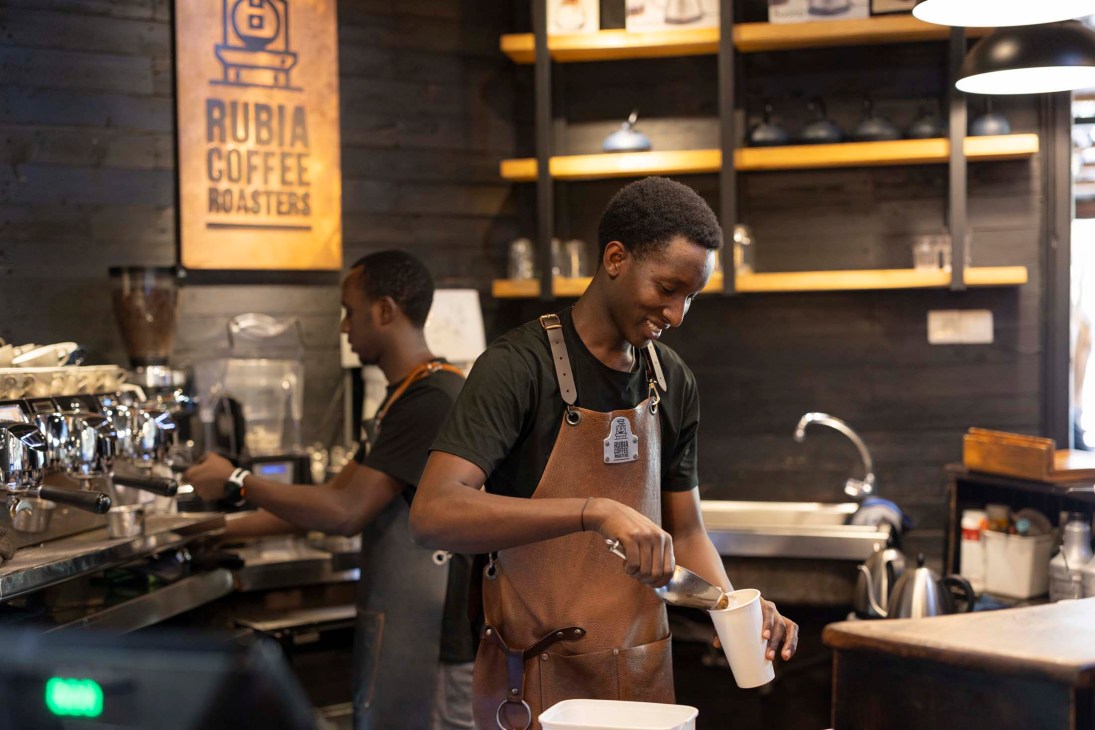

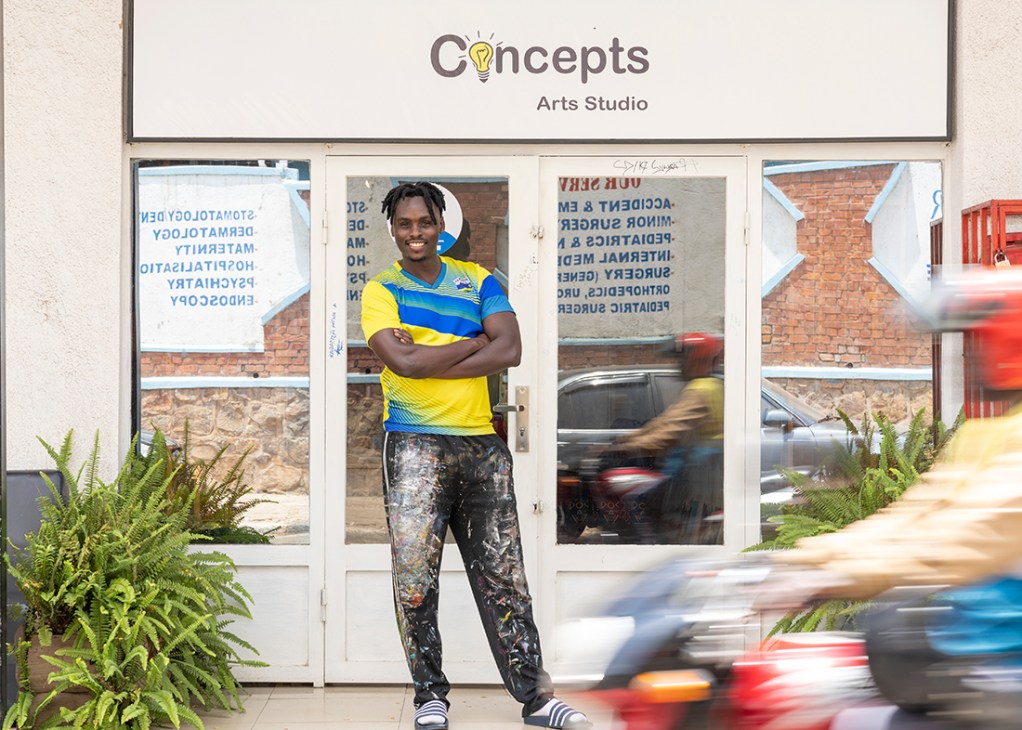
Mayor Samuel Dusengiyumva beams from behind a large desk in his airy city hall office. “The national government and the city have such big plans, for infrastructure, services, health and cleanliness,” he says. Dusengiyumva is a youthful 44 but old enough to have been a teenager during the genocide of 1994 that caused the deaths of 800,000 Rwandans. “Of course, the city is linked to the country’s history,” he adds. “Because of the 1994 genocide, the country shut down and Kigali was the most affected part. The fighting was very intense and the destruction and damage to infrastructure was everywhere.”
Its subsequent transformation didn’t happen overnight. “In 2000 the city was like a village,” says the mayor. “No roads, water not getting to different neighbourhoods – even accessing the airport was a problem because everything else was a priority.”
Talking so plainly of national tragedy would be anathema to political leaders from other countries but Dusengiyumva seems to embody contemporary Rwandans’ attitude that the genocide be invoked to push its citizens forward. “In 2002 the road network in Kigali was 102km for a city of 730 sq km but today we’re at about 700km of roads, with neighbourhoods joined up, the city joined up and people joined up.”
The idea of unity through tarmac is both romantic and practical in the Land of a Thousand Hills (as Rwanda is known). Indeed, at Dusengiyumva’s swearing-in ceremony, he talked of ensuring infrastructure for those still in need. Shortly after taking office he announced a further 40km of new roads to be built in the city. Of course, the mayor’s duties are a little more complex than healing through highways. Dusengiyumva also aims to attract the skills and investment that the city needs to get it off the ground. “Engineers, architects, developers, students, experts in technology and entrepreneurs” are who the mayor lists as requirements for a successful civic strategy.
Meanwhile, the widely derided schemes of European countries such as the UK that involve paying Rwanda to take their unwanted migrants are, anecdotally at least, not viewed so negatively in a country looking to grow and become more multicultural, as well as shake off the negative associations that its name still holds in much of the world. “People ask, ‘How did you do it, after that history?’” says Dusengiyumva. “The answer is that we know the power of vision – if you’re together and connected, you can do anything.”
Norrsken, a business and technology incubator, is all about vision and connectedness too. Founded by Swedish entrepreneur Niklas Adalberth in 2016, it’s a non-profit social-impact foundation. It operates hubs in Stockholm, Brussels, Barcelona and Kigali, which offer shared office spaces, expertise and investment advice. Kigali’s Norrsken House is just a few blocks from city hall. It sits in a downtown that contains international banks and hotels, as well as two of Kigali’s best-known genocide attractions, the Belgian Peacekeepers Memorial and the Hôtel des Milles Collines (the inspiration for the 2004 film Hotel Rwanda). Today the area is alive with joggers, taxis ferrying hotel guests and cafés leaning into a timber-clad Scandinavian aesthetic. Norrsken is a high-ceilinged, light-filled and solar-powered home of bright ideas, shared resources and competitive good humour.
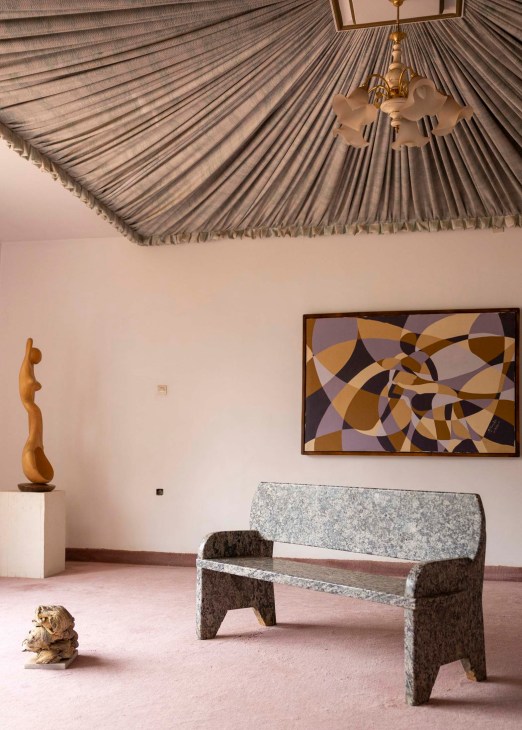
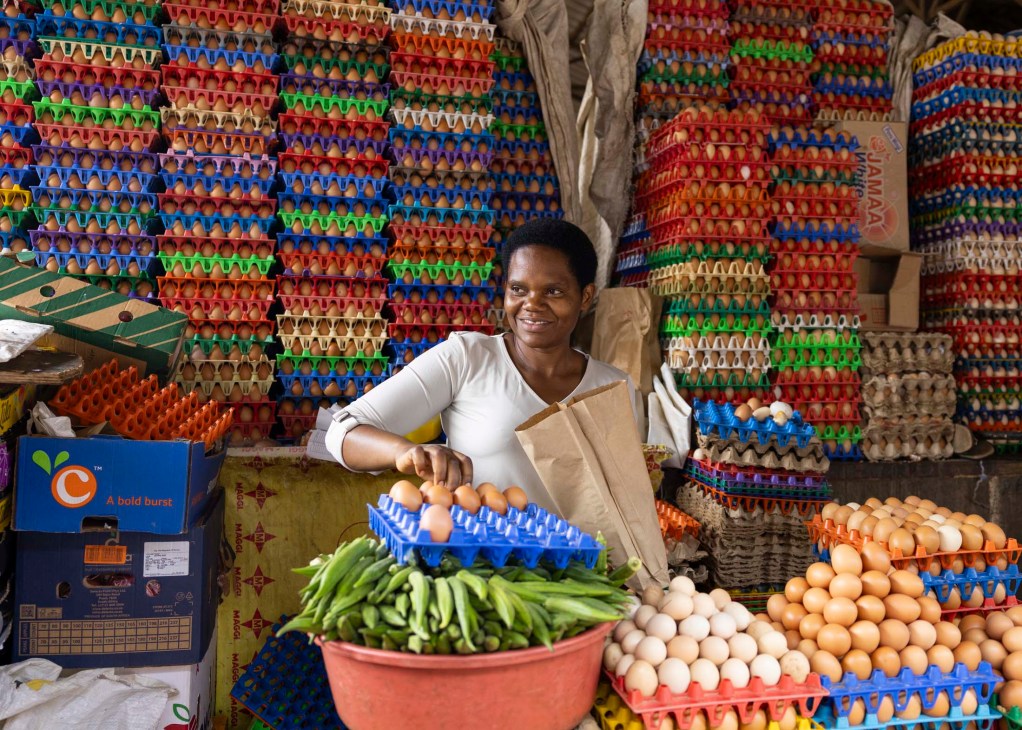
How did Elie Habimana, managing director, start off here? “I began as a computer-science engineer but my first assignment was to build the house, to look after that,” he says. So you turn up for an interview, they tell you, “Congratulations! You’ve got the job!” and then ask you to build the office? “Well, not exactly,” says Habimana, with a chuckle. “I had a background in project management but we are a hands-on organisation.” Kigali’s Norrsken has about 1,400 members and associations with some 350 companies, from local telecoms firm Africa’s Talking to Swiss pharma giant Novartis. Norrsken is a hub for small starters in need of desks as well as for advanced businesses.
“I don’t call any of them start-ups because the range and scale are quite broad,” says Habimana. “The aim for us is to wrap up talent, technology and development. After all, Kigali is positioning itself as a proof-of-concept market.” Habimana cites drone-delivery firm Zipline, which, while US-owned, began in Kigali and now transports medical supplies and agricultural essentials around Rwanda’s less-connected regions. Similarly, AFEX is an agricultural commodities exchange whose founders all met at a Kigali conference.
Back on the streets, things are being built, including the Kigali Green Complex, a 35-floor tower that is set to become the tallest building in the country; Zaria Court, a mixed-use entertainment and retail complex that will incorporate a basketball arena, hotel and restaurants; and, a bit further out, a new international airport built in partnership with Qatar Airways, which has taken a 60 per cent €1bn stake in an aim to make Kigali a regional aviation hub. The dig and clatter of all of this construction meets the traffic’s rumble and the horns of motos, the two-wheeled taxis that will take you anywhere for 50 cents.
But Kigali isn’t Cairo-crazy or Manhattan-mad; it’s an equable rush hour, a calmer commute. At a red light’s lull or on a shaded side street, the sound of the old green forests that the Rwandan capital was carved from by German colonialists in the early 20th century return: the bee-eaters, boubous and firefinches’ songs are more melodic than the ringtones and radios. This is the green and pleasant past that Kigali aims to embrace again among its developments and betterments, to happily mix city and nature.
Mayor Dusengiyumva talks of his aim to restore the city’s nature-rich wetlands, which were once home to more than 1,000 species of birds and bugs. Kigali City and the Rwanda Environmental Management Authority are working on a multiyear regeneration scheme that has planted 17,000 trees and restored the key Nyandungu wetland in the east of the city to alleviate flooding and increase biodiversity.
As we head northeast to the Nyarutarama neighbourhood to meet Bonita Mutoni, the more manicured version of Kigali’s verdure swings back into frame. Mutoni is the founder of Uber Luxe Safaris, a firm she set up in 2012 after working in luxury PR and helicopter leasing, and noticing that there were “wealthy friends of Rwanda for whom there wasn’t a company that could deliver an experience from beginning to end”.

Uber Luxe takes clients to high-end lodges in the Rwandan hill forests that border Uganda and the drc and are home to many of the country’s 1,000 or so gorillas – traditionally the main draw for non-African visitors to this part of the world. The gorillas have been well known to change people’s ideas of how and why they travel, what they conserve and their very attitude to life on earth. “It can be emotional for people, for sure – it certainly is for me,” says Mutoni.
The world can surely agree that the nature is stunning, fascinating and humbling. But what of the governance that makes Kigali a place where such a demanding venture in luxury hospitality could flourish? Without being quite as red-in-tooth-and-claw as the fauna, the power arrayed around Kagame, who has run Rwanda for almost 30 years, is absolute. Could it be that things work… or else? From the perspective of a local business-owner, it seems that the firm approach works. “You sense it as soon as you arrive at the airport,” says Mutoni, whose travels are as extensive as any of her wealthy clients’. “The airport’s right in the city, you get a visa on arrival, it’s easy to navigate and clients spend a day or two in Kigali before going to the hills. The city’s clean and safe. It just works.”
The city’s retail, art and culture offerings are relatively slim but high in quality, while much of the fashion action, such as Haute Baso and House of Tayo, are in the easily accessible suburbs. It’s sport, though, that is the sector most noticeably on the rise in Rwanda – and it’s centred in Kigali. In 2025 the city will host the UCI Road World Championships in September and an early group stage of the Basketball Africa League (BAL, an NBA spin-off), while a Kigali Formula One race has been mooted. “Tourism was all typical leisure or all safari,” says Mutoni. “But since we built the stadium and the arena, the number of sports tourists is just huge. I went to a Rwanda-Nigeria football game recently and it was impressive how many Nigerian tourists – and I mean high-end ones, booking into suites – there were. It was good to see.”
The BAL is also growing – the Armée Patriotique Rwandaise (APR) competes in the league’s Nile division alongside teams from Libya, Kenya and South Africa. “It’s amazing to see so many Africans convene for that,” adds Mutoni. Back in the arena of city governance, however, she is firmly patriotic. “There isn’t anywhere to challenge Rwanda nearby,” she says. “We do business in Kenya, Tanzania and Uganda but Kigali is always the easiest city in all of East Africa.”
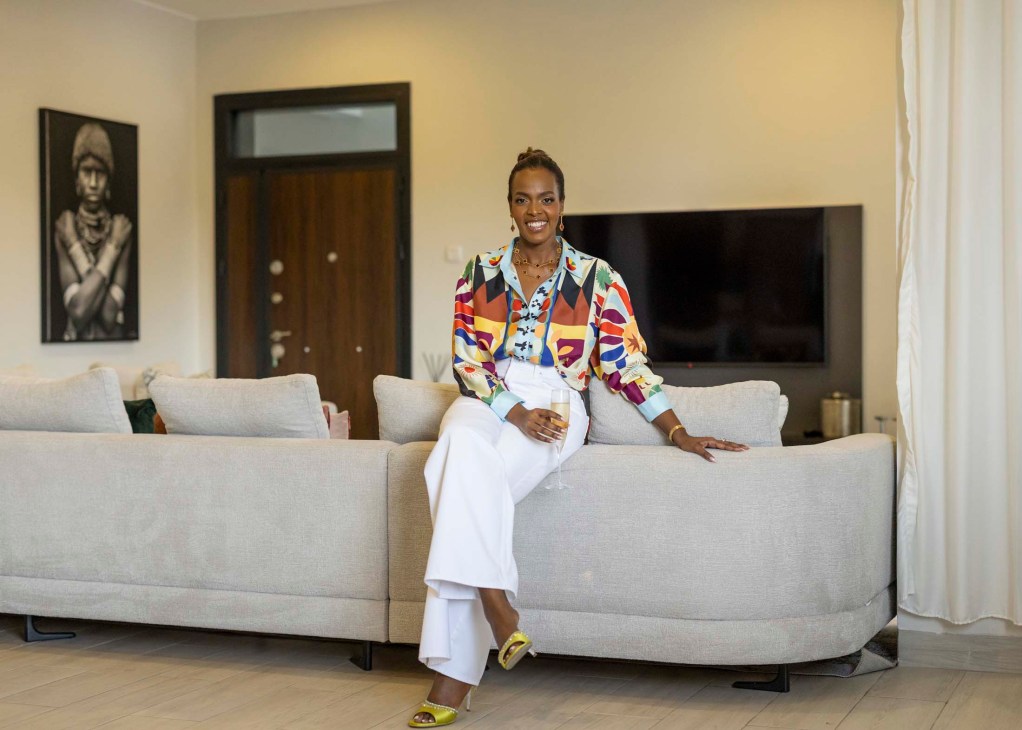
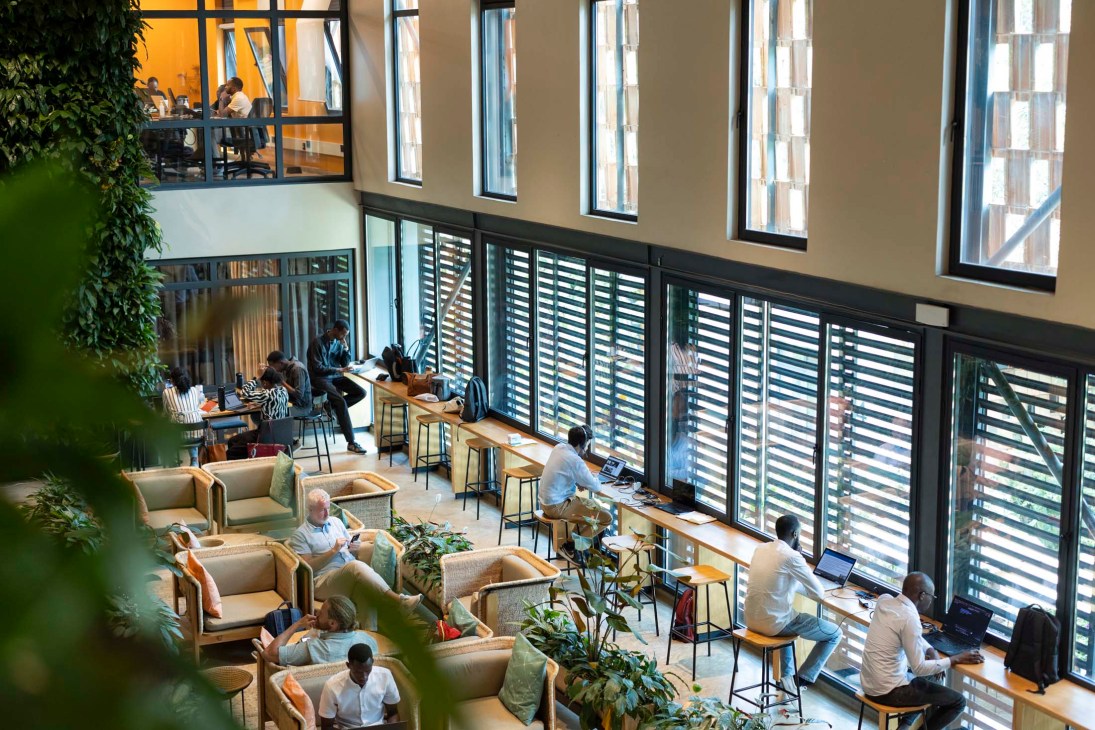
As Mutoni pops the cork on some chilled Ruinart, she talks of near-neighbours and an international scene of Africans, especially Nigerians, investing in Kigali property alongside Europeans, Australians and Indians. “Twenty years ago, I knew everyone,” she says. “I grew up in England and it’s a little like that now. We’re becoming a multicultural city. I love it.” After a top-up, Mutoni suggests a toast – and who are we to resist? “We’re working to become the Dubai of Africa – and I think we’ll get there.”
The drive to Kimihurura, in the tight green hills of the old city, is a lolling pleasure after some sparkling refreshment in the gently cooling late afternoon. This neighbourhood, known as Kimmy, has always been something of a leafy enclave for the upper echelons of the old colonials and the wealthy Rwandans and expats of today – people keen on big houses, high walls and guards packing inscrutable expressions and automatic rifles. Gyms, cafés, clubs, restaurants and dog-grooming parlours are sprinkled among the ornate gates of the large, politely recessed villas, which are laden with golden dewdrops and scarlet hibiscus that soften the barbed wire peppering their walls. It’s what you could call classic Kigali: green and pleasant, watchful and calm.
Christian Intwari is a young entrepreneur, NGO founder and event producer who managed the entertainment that went with 2024’s “much-expected” re-election of Paul Kagame. So much-expected, in fact, that any canny event planner could have saved some money by buying the fireworks in bulk four or even eight years in advance. Kagame secured 99.15 per cent of the vote in July 2024 – greater even than Vladimir Putin’s 88.48 per cent from four months earlier. As dusk falls, Intwari’s afternoon “office” has been a corner table at Kivu Noir, one of Kimihurura’s most beloved cafés. It serves cinnamon buns and French toast, boasts of deep coffee knowledge (Rwanda produces about 22,000 tonnes of beans a year) and has wi-fi robust enough to enable every customer to be across a handful of devices at once.
“If we’re talking about neighbourhoods, communities and governance,” says Intwari, “I’d mention the Our Past Initiative, my NGO. We’re interested in bridging the gaps between generations as well as different parts of the city – because the building process of our country is not just building.” Indeed, as Intwari says, across the nation, the last Saturday of every month is a umuganda, a day reserved for communities to meet up and clean their neighbourhoods together. The idea began in 1962 and was revived post-genocide as a way for horrifically divided communities to come together to make things literally and spiritually tidier. The enthusiasm for umuganda is, perhaps unsurprisingly, enjoying a purple patch as Kagame has strengthened his iron rule – though nobody who speaks to Monocle during our three days in the city so much as rolls their eyes at its mention (or of the president’s 99 per cent, for that matter). Nyamirambo is one of the city’s liveliest quarters, a former Arab trading area that’s home to Kigali’s oldest mosque (Muslims make up 2 per cent of the country’s population, while more than 90 per cent is Christian, though interfaith relations are strong). The neighbourhood also houses initiatives such as the Nyamirambo Women’s Center, which aims to counter violence and discrimination against women through a focus on and production of traditional crafts.
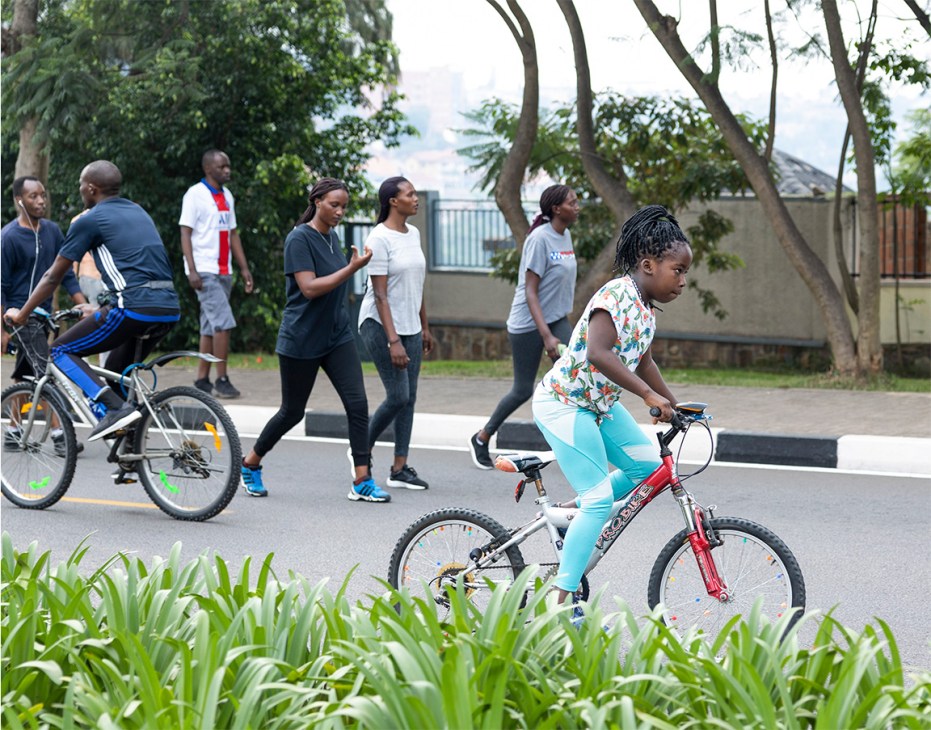
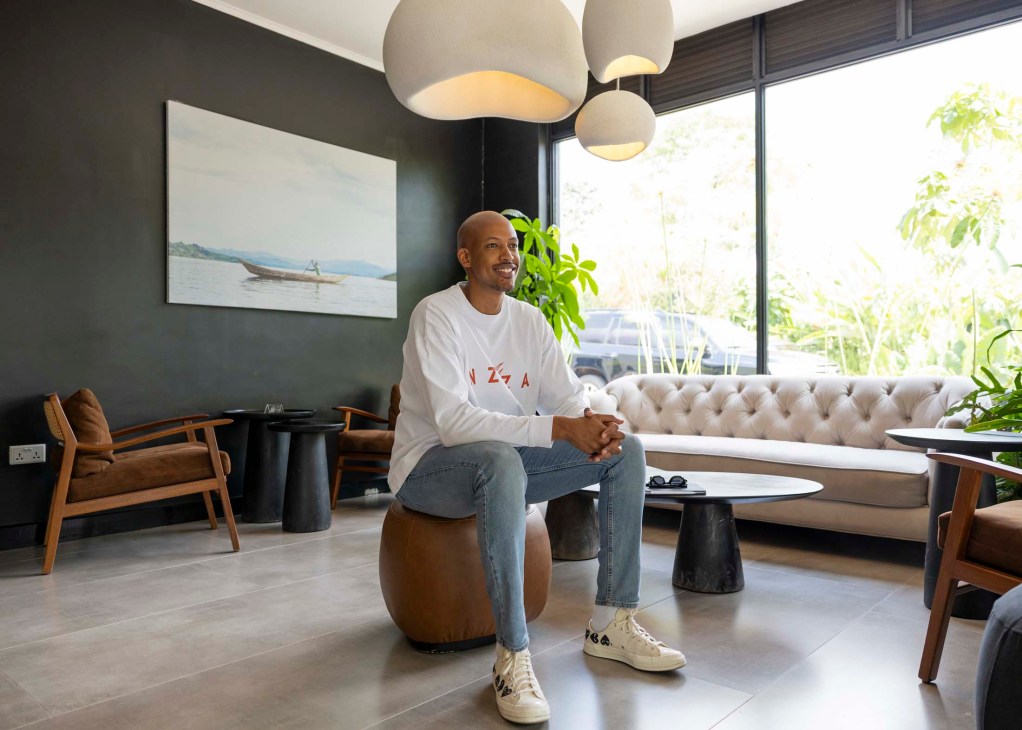
Before Monocle’s trip, Kigali had been described as “full of kick-ass women” by a female contact in Kenya, which is seemingly corroborated by the fact that 49 out of 80 Rwandan MPs are female. Nyamirambo is clearly a creative enclave and, under a bright sun, this neighbourhood of everyday fashion shops is a cacophony of competing hawkers and wannabe-winning signage: “Magnificat Boutique”, “Swagger Shop”, “Yes, Please!” Among the hand-drawn signs for saloons and salons, Timothy Wandulu runs the Concept Arts Studio, where he makes work, holds discussions and teaches others how to paint, sketch and collage. “I sketch the city as it changes,” says the paint-flecked Wandulu. “And it’s changing pretty quickly.”
He is certainly correct but it’s change that is taking the Rwandan capital nearer to the future that it aspires to and further from its grim past. It seems that contemporary Kigali is built on solid stuff. Is it down to mayor Dusengiyumva’s good governance? Well, he would say that – but so does everyone else. A liveable city that attracts investors across business and technology, hospitality and leisure, sport and tourism? Is the talk of parallels to Middle Eastern and Asian cities well on the way to being richly deserved?
After all, they do share a certain something in common. On a morning walk or an evening stroll in the quieter, greener lanes of Kigali, you’re lulled by the sounds of the industry of upkeep as much as birdsong. Straw brooms sweep near-pristine streets, fallen leaves are collected from well-trimmed verges, the snip-snip of secateurs administer to well and truly ruly hedges. Kigali’s bloody history is mostly confined to its poignant and powerful genocide memorial; it is not obviously borne out in that emphasis on security, the high gates or well-trained guards.
It might seem like a peculiar proposition but Kagame’s firm grip on power has brought peace and prosperity here. Perhaps peace needs governance, liveability needs safety and investment needs security. Under the jacarandas at dusk, the bee-eaters and firefinches squabble and warble like people but fly off to roost in the same cool branches. The talk here? It’s good.
Rwandan genocide
The 1994 genocide lasted 100 days and led to the murder of at least 800,000 people across the country. The trigger for the massacre was the assassination of the then-Rwandan president, Juvénal Habyarimana, who had led the country since 1973 and whose plane was shot down with a surface-to-air missile on its approach to Kigali airport on 6 April.
Habyarimana’s killing unleashed a wave of violence against the minority Tutsi ethnic group. The president was a member of the majority Hutus, who had long been marginalised under colonial rule, which favoured the Tutsi as a ruling class. After seizing power in a military coup in 1973, Habyarimana maintained the pro-Hutu line and used government propaganda and his deadly militia, the Interahamwe, to spread fear and dehumanise the Tutsis.
The genocide was ended on 4 July 1994 when the Rwandan Patriotic Front (RPF), a revolutionary paramilitary group made up of mostly Tutsi men exiled to neighbouring Uganda, swept into Kigali and overthrew the Hutu government. The RPF was led by Paul Kagame, who remains the Rwandan president to this day.
In retirement, Dries Van Noten unlocks a new way to channel his creativity
Like many luxury fashion houses, Antwerp-based label Dries Van Noten has been surfing the waves of change. Its founder, who bears the same name, has stepped down from the role of creative director and all day-to-day design responsibilities at the label he founded in 1986. The transition, though, couldn’t have been smoother.
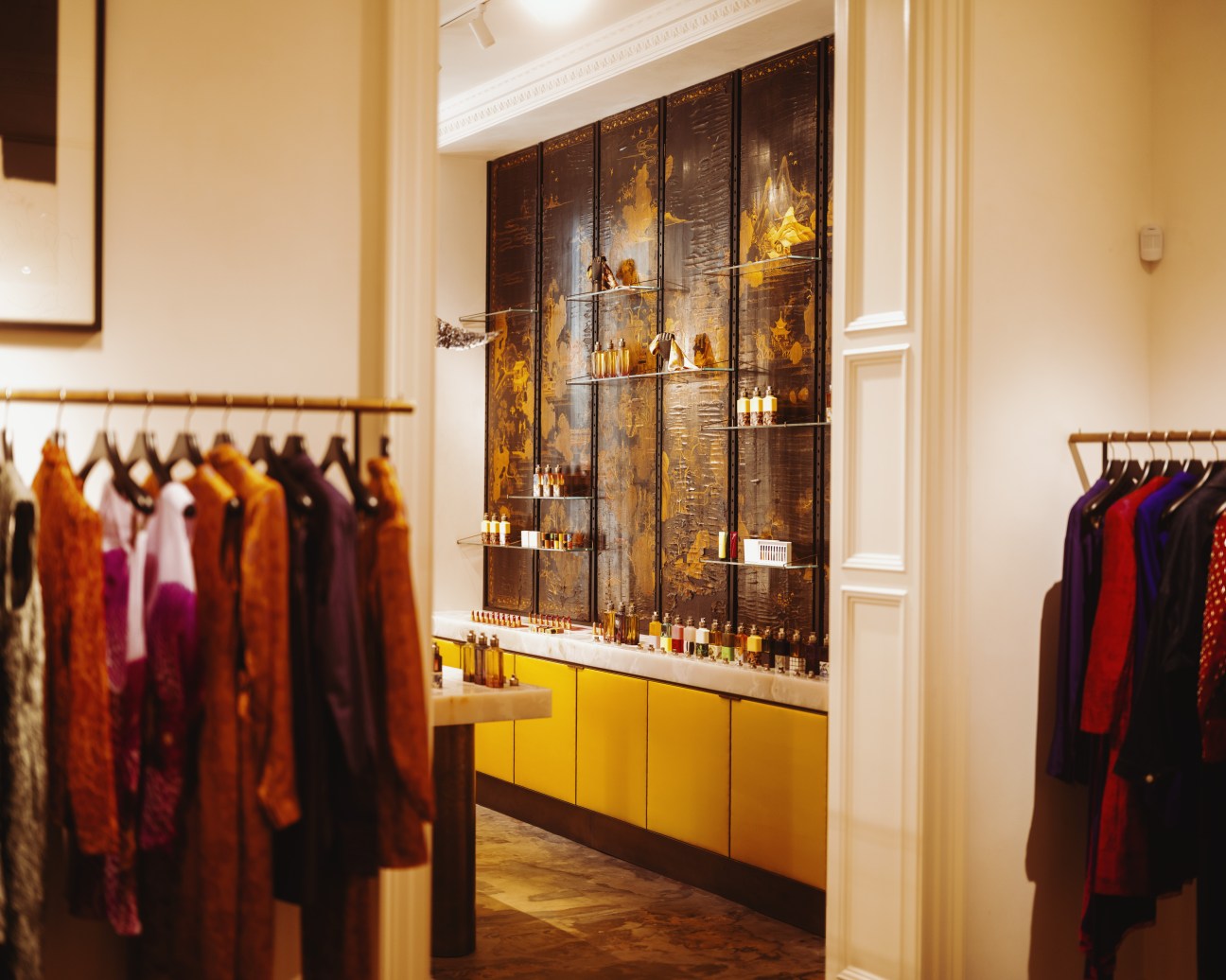
Julian Klausner, a 33-year-old designer who has worked under Van Noten since 2018, has taken on the mantle. His debut show, presented at the Opéra Garnier during the last edition of Paris Fashion Week, was celebrated by the fashion industry for paying homage to the founder’s signatures while moving his vision forward. Meanwhile, Van Noten – who now sits on the front rows of his own shows to support his successor – has unlocked more time to tend to his garden in Lier, on the outskirts of Antwerp; oversee his label’s growing beauty line (most of which is heavily inspired by the aromas of his famous garden); and collect artworks, furniture and design objects from around the world for the brand’s newly opened boutique in London.
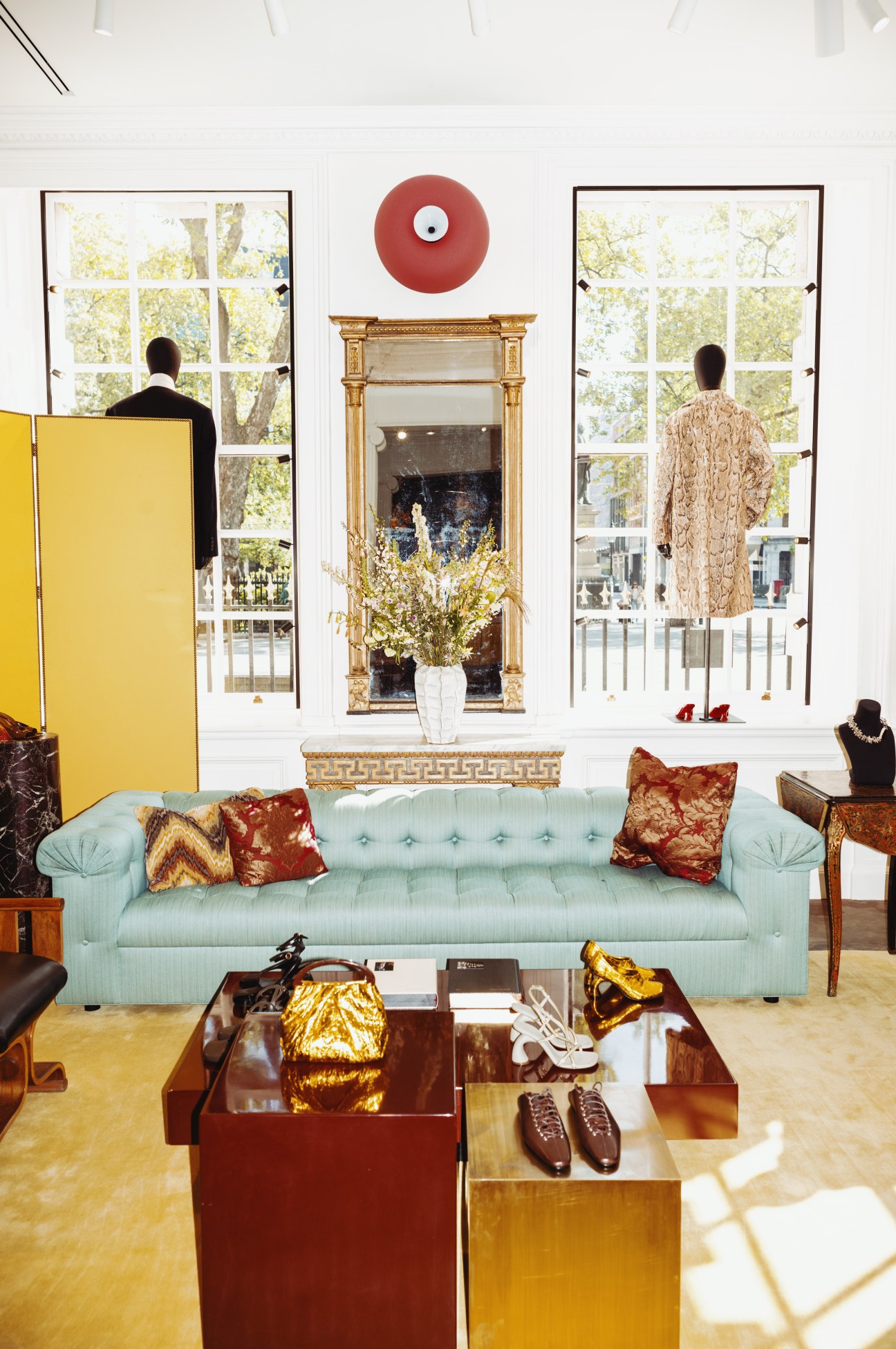
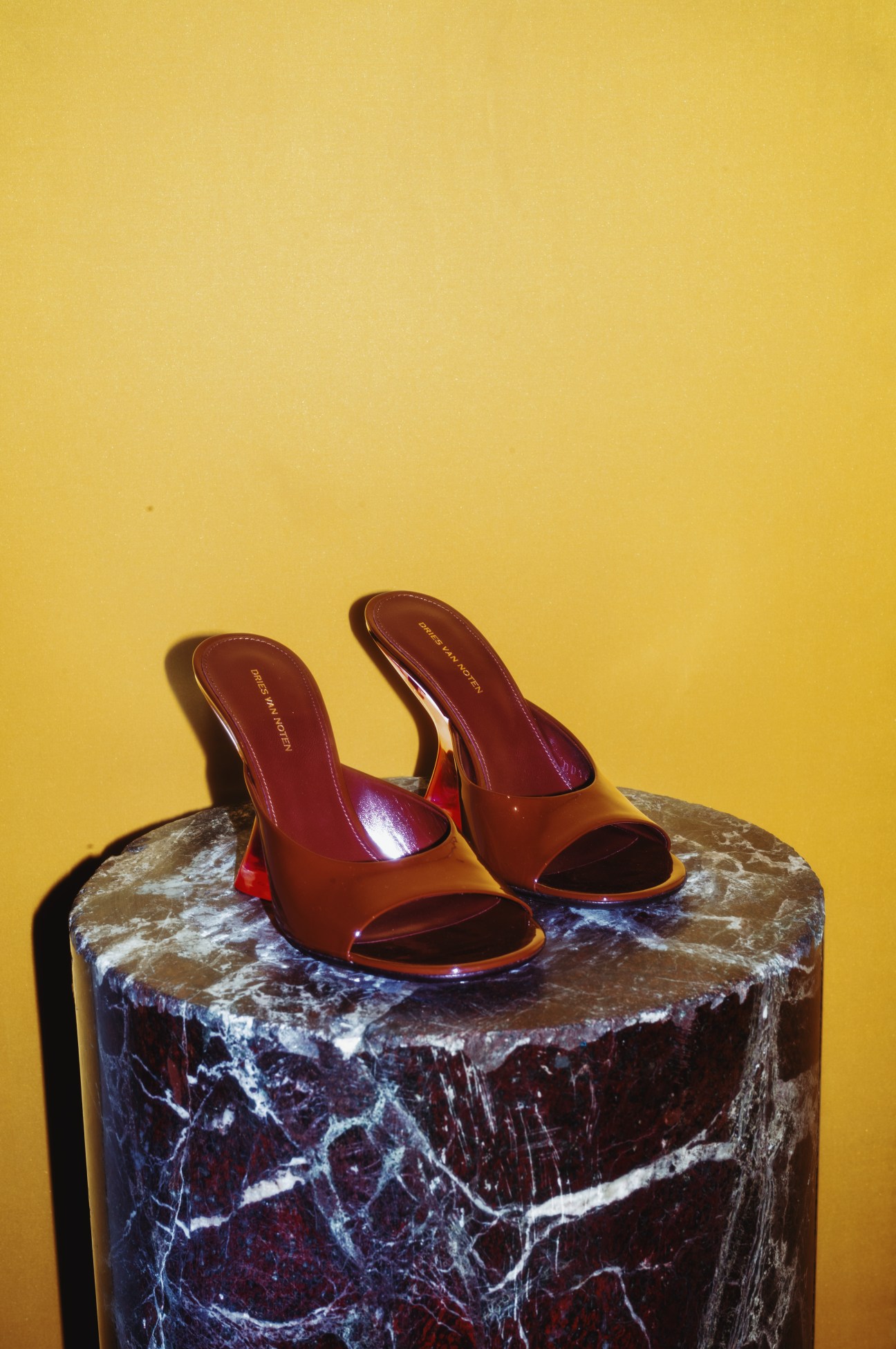
Visiting a Dries Van Noten shop has always been considered a creative pilgrimage of sorts: the brand’s Antwerp flagship and its Paris outpost on the Quai Malaquais are spaces where you can discover new artists, experience architectural landmarks or simply be inspired by taking in the colour palettes on the walls. In the Los Angeles store, there’s even a pianist greeting you at the entrance. “It really started in Paris in 2007,” says Van Noten. “That was the first time we approached a store as something more than just a place to show clothes. Everything from the garments, the furniture and the art [has to] work together.”
With backing by Puig, the Spanish group that bought the brand in 2018, Van Noten now has an opportunity to apply his vision for retail to new cities – and he has been doing so mindfully, taking his time and ensuring that each location has its own story to tell. In London, he picked a former bank on Hanover Square with barely visible signage and no other luxury shops in sight. “The space began to guide us – once we started placing objects, choosing textures and letting in the light, it started to show us what it needed,” says Van Noten. Contrast was one of the needs he quickly identified, choosing to juxtapose the Grade II listed building’s historic features with modern design items. “There’s a certain calmness and contrast that I associate with Flemish aesthetics and that comes through in the store too.”

Centre stage is a sculptural, brass chandelier by Belgium-based Vladimir Slavov, a one-of-a-kind design that Van Noten spotted at the Objects with Narratives gallery in Brussels. “This wasn’t a custom order but I found a way to postpone another client’s project to do this for Dries,” says Slavov from his workshop in Zaventem, just outside Brussels, where he sketches and creates prototypes and casts all his objects. A design purist, Slavov speaks of his love of “minimalist, strong shapes that can stand on their own” when it comes to design and to fashion. “The few [clothing] items I own that do attract a bit of attention are from Dries,” he adds with a smile, referring to an embroidered wool bomber jacket by the brand. “I don’t dress in a fashion-orientated way but Dries Van Noten designs appeal to me in a way that surprises even myself.”
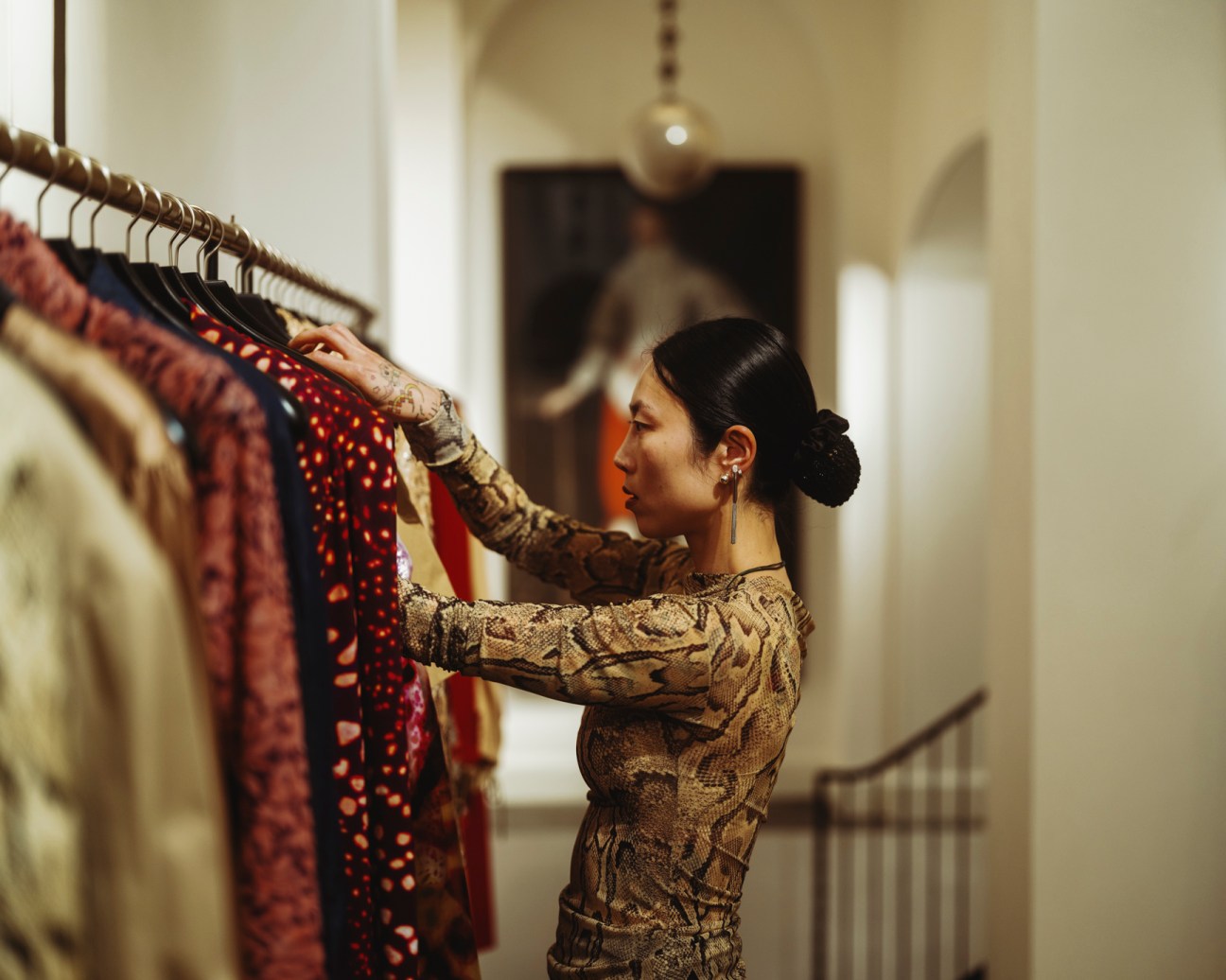
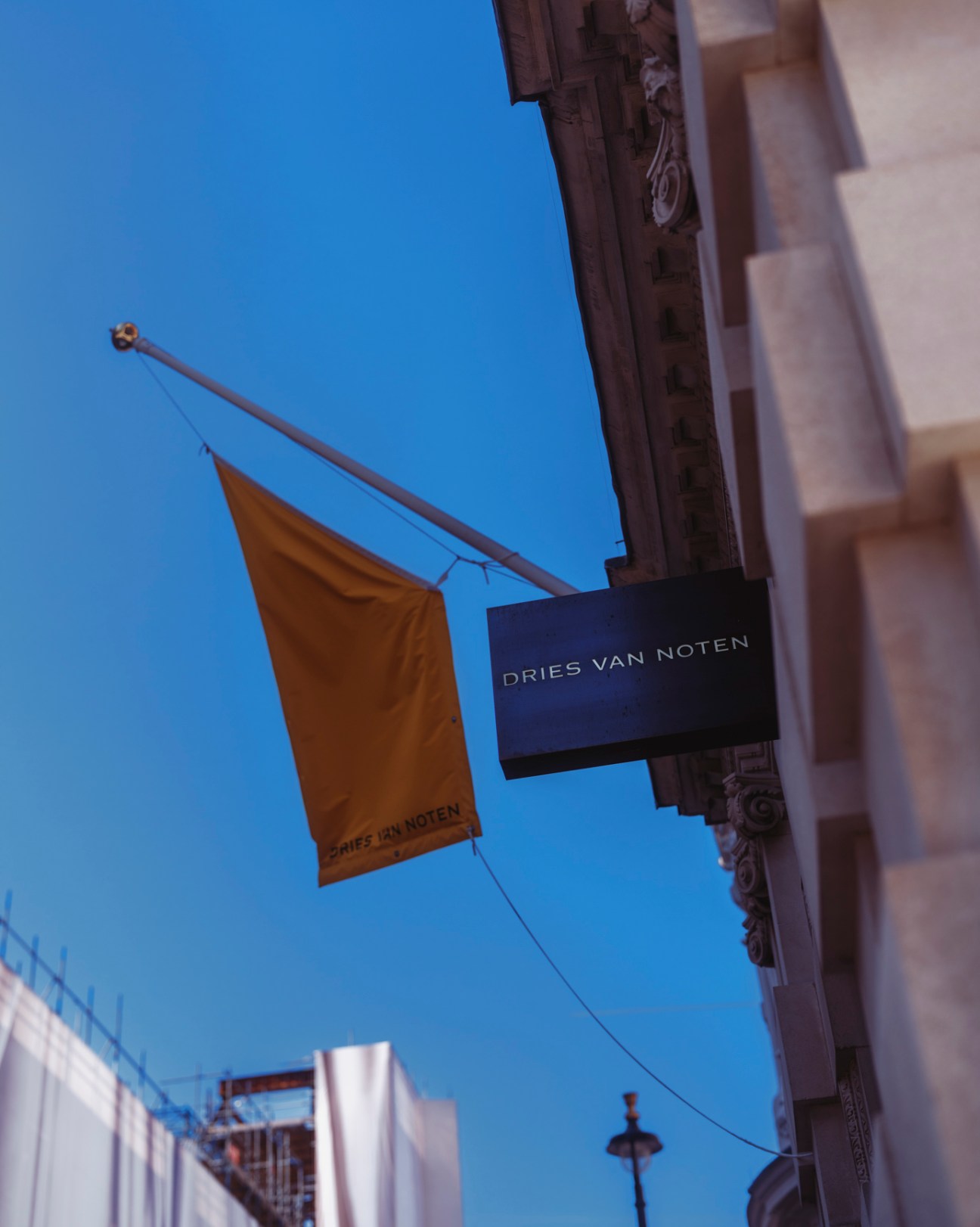
As well as highlighting the works of fellow Belgian-based artists, Van Noten also makes a point to celebrate local makers. Another significant commission in his new London shop includes a round Convex mirror designed by Collier Webb and crafted at its workshop in Sussex. “Dries just walked into our showroom on Pimlico Road,” says David Arratoon, design director at Collier Webb. “I’m not sure if he was intending to come in or was just looking around. He fell in love with one of the mirrors and it all started from there,” adds Arratoon, who then worked on creating a custom mirror for the shop, as well as a brass-and-glass lighting fixture. “There was an ongoing discussion about the antiquing and patinating process of the mirror, which is done by hand and can be adapted to change the depth of the colours and overall feel of the object. We want our designs to feel like they’ve always been there.”

In fact, the entire boutique appears to have always been there. There might be something new to discover in every corner – menswear, womenwear and beauty ranges; Van Noten’s record collection; and artworks by the likes of Tracey Emin and David Hockney – yet the personal stories and emotions behind each object come together to create a welcoming, lived-in space. “You might see something very minimal next to something ornate, or something industrial beside something soft. It’s about finding harmony in this kind of tension,” says Van Noten.
driesvannoten.com
A United States of Europe is not so far-fetched
At the Munich Security Conference in February, the US vice-president, JD Vance, informed his hosts that they were a wretched bunch of effete, cheese-eating milquetoasts with whom his country could no longer be bothered (I paraphrase but not that much). There has since been lots of hand-wringing about how the continent should respond to the threat of US abandonment. One of the most robust responses that I’ve heard came from the former commander of the US Army in Europe, Lieutenant General Ben Hodges. Speaking to The Foreign Desk at the Delphi Economic Forum in April, he suggested (and I paraphrase barely at all) that Europe should stop whining, recognise that it is a superpower and start acting like one.
Hodges is correct. Europe’s combined GDP and collective military spending dwarf that of Russia, its only meaningful external threat. But perhaps neither Russia nor Europe can see past the fact that, for all the supranational organisations that European countries might have joined, the continent remains a kaleidoscope of nationalities. The idea of formally uniting them is not new; it has been proposed in various forms by Winston Churchill, Leon Trotsky and George Orwell. But is its moment looming?
There are many examples of disparate democratic polities becoming one. The colonies of Australia formed a federation in 1901. The US became a unitary bloc in stages from the Declaration of Independence in 1776 to the admission of Hawaii in 1959 (and, as Donald Trump sees it, the country isn’t done yet). Indeed, many of Europe’s modern states were once disorderedly patchworks of fiefdoms.
In many respects, it doesn’t seem that difficult. Europe already has a flag, a parliament and a president. (The latter is not directly elected but that can be fixed. Who wouldn’t enjoy the sight of a Finnish candidate kissing babies in Greece or an Irish contender shaking hands in Montenegro?) Most of Europe already uses the same currency. It is true that there are cultural differences but I would contend that Poland and Portugal, for example, have at least as much in common as Alabama and Connecticut. The US turning away from Europe would have seemed, until recently, unthinkable. A United States of Europe is, at the very least, thinkable.
Mueller is the host of ‘The Foreign Desk’ on Monocle Radio.
Interview: Sou Fujimoto on restoring balance with nature
“These are sketchbooks from the very beginning of my architecture-school days,” says Sou Fujimoto. “Each is numbered: year, date, book number.” The Japanese architect picks up a yellow one and starts looking through it. It’s dated 13 January 1993 – his third year as a student. “Of course, I still have a sketchbook but lately I’ve been doing digital sketches on an iPad because I can share them more easily with my team.”
He could be forgiven for sacrificing the beauty of a hand-drawn sketch for convenience. After all, he’s been busy: he master-planned the Expo 2025 site in Osaka, which opened to the world in April, and is now preparing for his first major retrospective, to be held at Tokyo’s Mori Art Museum from July to November.
Ahead of this showcase, which covers more than three decades, Monocle meets Fujimoto at his studio in Tokyo’s Koto City. He has de-archived every sketchbook and model from his career, laying them out on the studio floor. “We’re not just showing old models,” he says. “We are making new ones too. People will see that the thinking and the process are ongoing.”
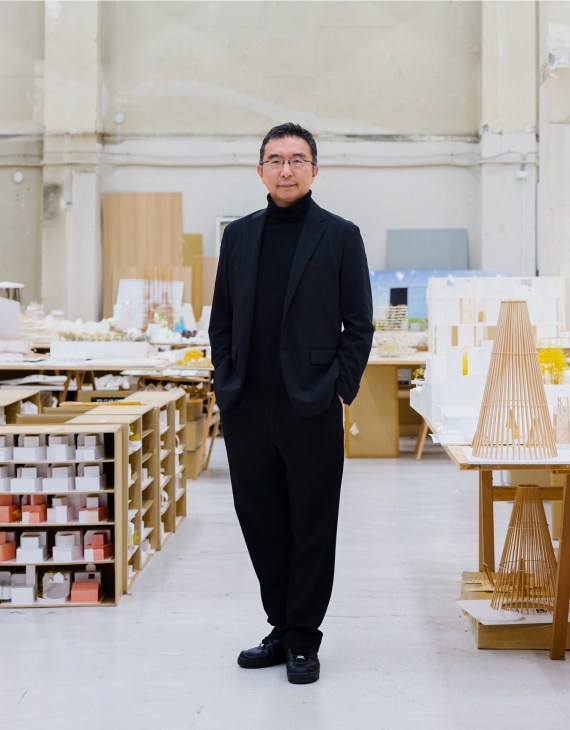
It’s a process that started at the University of Tokyo. “I wanted to study physics but I couldn’t understand anything,” says Fujimoto, laughing. “I finally chose architecture. The only architect I knew at that time was Antoni Gaudí. Then my classes introduced me to Le Corbusier and Mies van der Rohe.” On learning about these modernist masters, Fujimoto became hooked. “They not only created new shapes and spaces but also lifestyles. That was fascinating to me.” While the architect’s output looks very different to that of his early idols, there are parallels. Like Le Corbusier, Fujimoto believes that architecture should be in harmony with the natural world.
“Early in my career I realised that I was creating boundaries between inside and out,” he says. “But I thought that they should disappear. And I am not just talking about physical architecture; I also mean social and philosophical boundaries. As an architect, the question for me is: how do we create beautiful relationships between human life and society, and the surrounding nature?”
Some clues might lie in Fujimoto’s projects, such as House N (2008) – a home in Oita, Japan, that features layers of walls and windows that provide both privacy from neighbours and views to nature – or his 2013 Serpentine Pavilion in London, in which a semi transparent grid of white steel tubes offered views across the site in Hyde Park. Many of his other projects reference organic structures, such as birds’ nests, caves and forests.
Despite the accolades that he has received for his approach, Fujimoto doesn’t think that his work is particularly groundbreaking. “In the past, our lives were closer to nature but we created boundaries to resist it in the hope of a more comfortable life within an artificial environment,” he says. “But over the past 150 years, we have found that it’s strange to be isolated from the wonder of nature.” So how can architects redress the balance? “By digging deeper and understanding locality in terms of nature and materials,” he says. “In doing so, we will find something unique, allowing the merging of boundaries and connecting people’s lives with the surrounding nature – and people with each other.”
The CV
1971: Born in Hokkaido, Japan.
1994: Graduates from the University of Tokyo with a degree in architecture.
2000: Establishes Sou Fujimoto Architects in Tokyo.
2006: Wins gold in the house competition by the Tokyo Society of Architects & Building Engineers.
2008: Wins the Japanese Institute of Architecture grand prize.
2010: Completes Musashino Art University Museum & Library in Tokyo.
2013: Creates the Serpentine Gallery Pavilion in London.
2018: Builds L’Arbre Blanc, a village-like housing development inspired by trees in Montpellier, France.
2020: Completes Forest of Music in Budapest, a museum in the Hungarian capital’s most famous park.
2025: Master-plans Expo 2025 in Osaka, Japan.
Ohlab’s House in the Mountains celebrates the overlooked beauty of Palma
Take the winding road west out of Palma and you’ll soon find yourself in the low, craggy limestone mountains and pine-tree-lined valleys that frame the Mallorcan capital. Here, there are leafy suburbs with houses that sit prominently in the landscape, some boldly clinging to cliff-faces while others, three-storeys high, announce themselves from the road. Most enjoy east-facing views of the city and Mediterranean Sea. But House in the Mountains is different: it seeks to celebrate Mallorcan landscape and identity by turning its back to these trademark vistas and retreating from view altogether.
“It’s very discreet,” says Paloma Hernaiz, the co-founder of Palma-based architecture studio Ohlab, established with her work and life partner Jaime Oliver in 2007. The duo walk Monocle through the project, which the studio has newly completed. “We’re still very close to Palma but we positioned the house so that it’s not visible from the road or neighbouring properties,” says Hernaiz. “It makes you feel like you are in the countryside.”


The residence, despite being only a 20-minute drive from the city centre, does indeed feel remote. It sits on a site that is covered with rock carnations, fan palms and large boulders, and has views south across a forested valley rather than towards the city and the sea. “The first few times we came to this site, we would walk around with the client, discussing how much they loved its unspoiled nature,” adds Oliver, explaining the brief. “The client showed respect and care for the actual landscape, so there was a need to integrate it into the house.”
The resulting floor plan embraces the area’s naturally askew topography. The architects worked with, not against the slope, creating a series of interconnected platforms that house a dining room, a kitchen, a living room, bedrooms and a studio, respectively, and gently cascade down the site. Most of these platforms – with the exception of the kitchen and studio – sit just off a south-facing courtyard that features garden beds planted with native species, mirroring the untouched landscape around the building. Thanks to an infinity edge, the elongated swimming pool, which sits to one side of the courtyard and is lined with pinewood sunloungers, blends in seamlessly with the vegetation beyond.
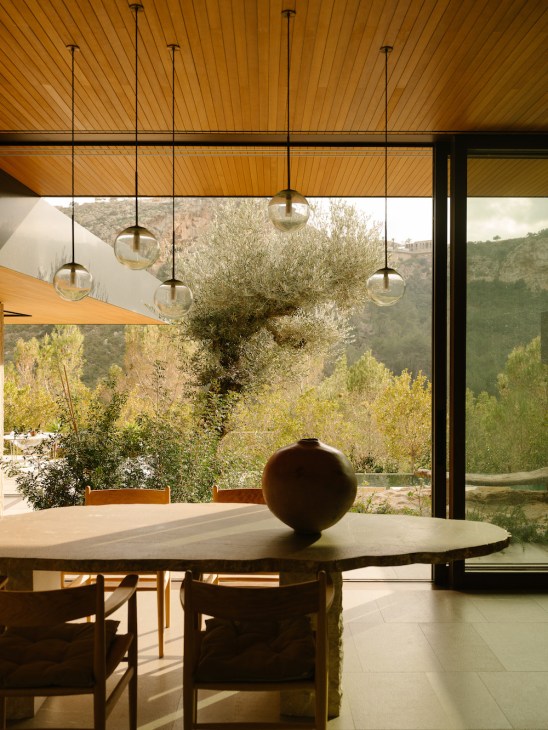

This platform-led approach minimised the excavation work required, allowing the architecture to be positioned on the site in a way that left it mostly untouched. “We wanted to celebrate the rocks,” says Oliver. To do so, Ohlab transformed some of the rocky outcrops that existed on site into natural walls, which line a corridor leading to the bedrooms and support the carport.
The architects also partnered with local manufacturer Huguet to develop a bespoke terrazzo cladding for additional artificial walls. Composed of recycled materials and aggregates, including some from the site’s limited excavation works, this custom product is naturally coloured to match the pigment of the local rock; each piece has saw-cut grooves in its surface, which have been roughed up by hammers, to create an irregular finish that references the rocky surroundings. “The aim with this cladding is not to imitate rock,” says Oliver. “It’s more abstract; it’s like we have domesticated it. It’s important because the rock is the narrative of the house.”
This championing of the Mallorcan landscape and materiality continues inside: the dining table and kitchen counter are made from Binissalem limestone quarried nearby. The latter is sculpted from a single block, with the hard, grey-hued limestone providing a solid foundation for cooking and preparing meals. It’s enhanced by precision-built custom woodwork and untreated brass fixtures that introduce warmth and counterbalance the rugged nature of the stone.
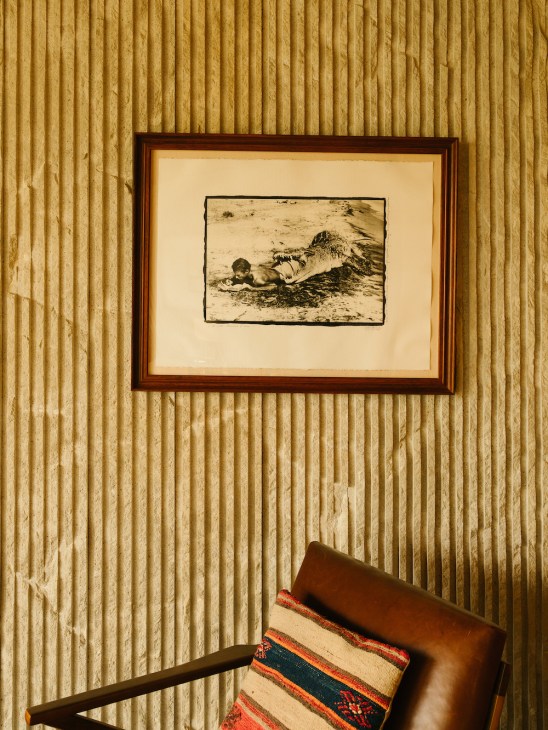
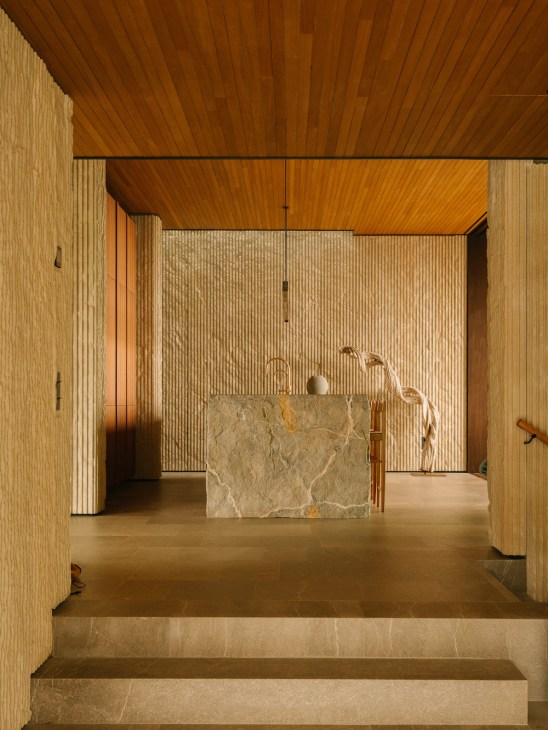
Additionally, there’s lighting created by Palma-based firm Contain, which includes bespoke table lamps made from blackened natural brass. These are complemented by existing Contain products such as the Ohlab-designed H Pendant Lamp, a long overhead fixture with a H-shaped profile, which now hangs above the kitchen bench. Notable furniture pieces by La Pecera, a Mallorca-based furniture shop and brand, include the living room’s Robusta armchairs.
Mallorcan identity is celebrated through the architect’s embrace of the microclimate too. Oliver and Hernaiz looked to enhance the local biodiversity by creating a green roof that functions as a thermal insulator for the house, which helps reduce energy demand and improve air quality. The duo also worked with the prevailing winds and natural light to ensure that the home would be in tune with the environment by orienting the majority of the building along a north-south axis. “This positioning means that the sun enters all the way into the house during winter, with awnings blocking it out in the summer, so it remains very fresh,” says Oliver.
Cooling thermal breezes are harnessed thanks to this orientation too, with a sea-to-mountain breeze rolling south through the valley in the mornings and a mountain-to-sea coming from the north in the evenings. Windows on both façades also ensure there is plenty of cross-ventilation.
All of this builds upon the initial move to orient the home north-south to provide both privacy and a verdant vista. “It purposefully gives its back to the sea and city, for privacy, light and energy efficiency,” says Oliver. “It feels like you’re in the middle of the mountain and part of the Mallorcan landscape.”
Ohlab: On sustainability
House in the Mountains is a prime example of Ohlab’s architectural ethos, which is defined by building strong relationships between their architecture and the local environment. It’s an approach that’s easy to classify as “green” or “sustainable” – but the duo are keen to dispel the notion that this doesn’t mean such architecture can be remarkable or fun.
“We want to attract people not just because a project we do is sustainable but because the architecture is cool,” says Oliver. “We are tired of the discourse that ‘you have to like it because it is sustainable’. That’s a lazy argument. I want our architecture to feel a bit naughty – like having a really good, well-made burger.”
Naughtiness aside, Oliver and Hernaiz are keen to stress that they still consider carbon footprint and energy efficiency in all their projects. “In general terms, we try to produce locally, benefit local communities and minimise the carbon footprint,” adds Oliver.
Young designers are rejecting tech and embracing imperfection
A growing number of young people are ditching technology and screen time for human connection. Reports have shown an increase in church attendance among 18-to-24-year-olds, who mainly cited their desire for a sense of belonging, rather than a belief in a higher power. Plenty of smartphones are also being ditched as part of this back-to-basics movement.
The trend appears to be catching on in the design community too. In partnership with Design Singapore Council at its Future Impact exhibition, Monocle hosted a series of radio roundtable discussions on the future of the industry at this year’s Milan Design Week. Nearly every single participant mentioned their desire to get back to basics, away from technology and towards humanity.
“We are surrounded by technology so we need more real things in our home,” said Milan-based art director and product designer Federica Biasi. She outlined her desire to expand her practice in a way that embraces nature and handicrafts. It’s a sentiment supported by Lagos-based designer Nifemi Marcus-Bello, who said that his most coveted products are those that show signs of his hand in their creation. “People want to have feelings that are more authentic and raw,” he said. “You get that with crafts. They allow you to consider the emotional side of design.”
The duo underlined a growing appreciation for the unique qualities and imperfections that come with handmade items, in stark contrast to the uniformity of mass-produced goods or AI-designed products, which can feel impersonal and soulless.
There’s also a benefit for the designers themselves. “We have all these tools of convenience today, led by AI, but how are you going to learn to be a great designer if you take short cuts?” said Swiss-US designer Yves Béhar. “In order for something great to come out, you have to put in the time, energy, sweat and tears.” Going back to basics, then, might not only be good for the products that we find in our homes but the people who make them too.



